30 Best local delicacies ranking (Kansai region)
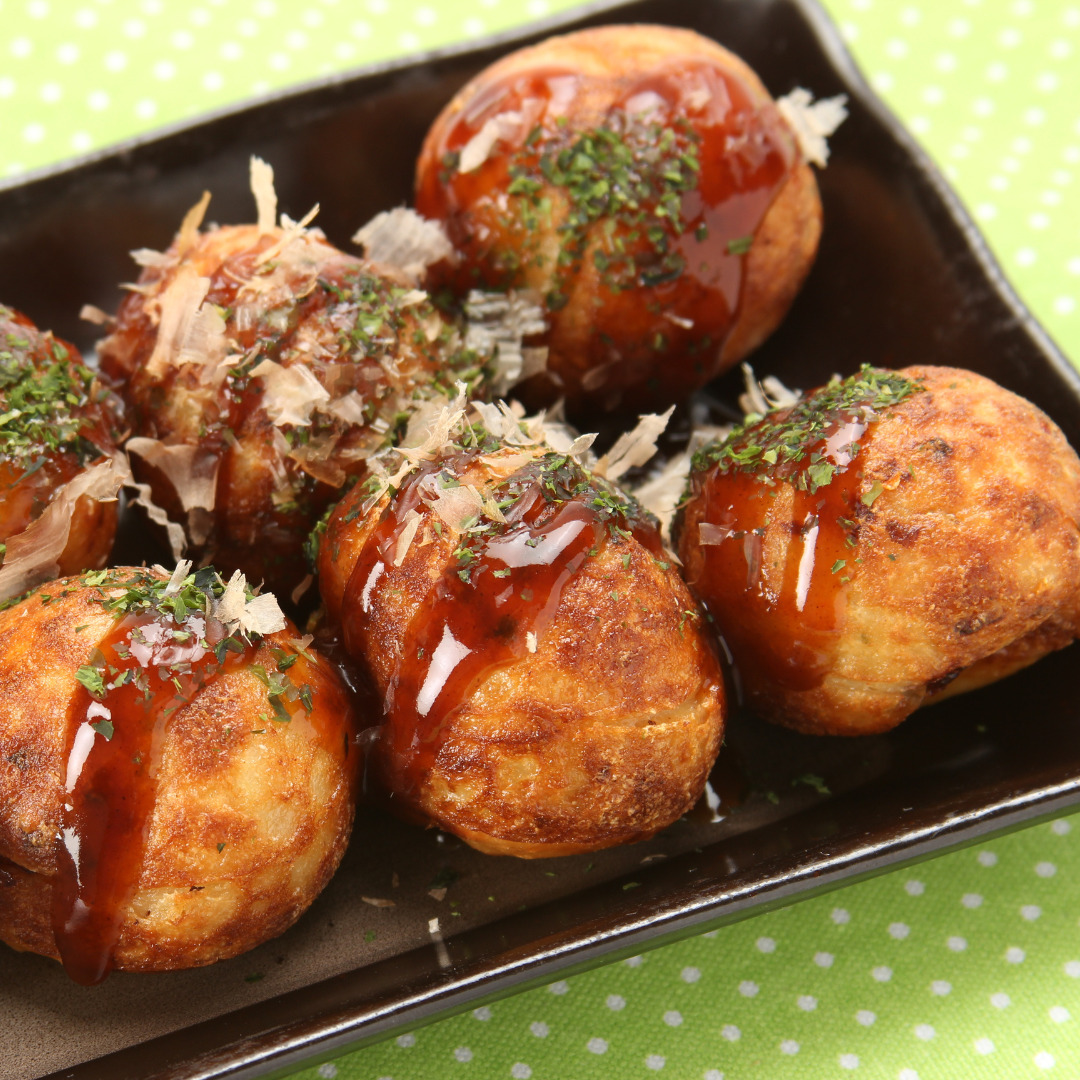
Table of Contents
1. Introduction
2. Local delicacies ranking (Kansai region)
1. Introduction
In Japan, many dishes are unique to each region. These dishes familiar to the locals are called variously “local gourmet,” “B-class gourmet,” “soul food,” etc., and are very popular. They are many dishes that have been developed in recent years and include a variety of genres such as Western and Chinese cuisine.
On the other hand, “local cuisine” has a history of more than 100 years and is mainly Japanese cuisine that makes use of local ingredients and food culture. Many of these dishes have survived because they are supported by the local people, and basically, all of them are of a certain standard of taste.
However, it is impossible for foreign travelers with a limited number of travel days to eat all of the unique regional cuisines.
Therefore, we have compiled more than 1,000 types of “local gourmet,” “B-class gourmet,” “soul food,” and “local cuisine” and ranked them by region in order of the number of hashtags on social networking services (SNS).
We hope that this ranking will make it easier for foreign travelers to try dishes unique to a region.
2. Local delicacies ranking (Kansai region)
1. Okonomiyaki (Osaka Prefecture)
2. Takoyaki (Osaka Prefecture)
3. Obanzai (Kyoto Prefecture)
4. Meat and potatoes (KyotoPrefecture)
5. Warabimochi (Nara Prefecture)
6. Spiny lobster (Mie Prefecture)
7. Kyoto Ramen (Kyoto Prefecture)
8. Beef cutlet (Kyoto Prefecture)
9. Whitebait bowl (Wakayama Prefecture)
10. Oriental Medicinal dishes (Nara Prefecture)
11. Pork bun (Hyogo Prefecture)
12. Boiled tofu (Kyoto Prefecture)
13. Yuba (Kyoto Prefecture)
14. Ise Udon (Mie Prefecture)
15. Kyoto vegetables (Kyoto Prefecture)
16. Koya-tofu (Wakayama Prefecture)
17. Grilled offal (Osaka Prefecture)
18. Akashiyaki (Hyogo Prefecture)
19. Kushikatsu (Hyogo Prefecture)
20. Shojin ryori (Wakayama Prefecture)
21. Raw whitebait bowl (Hyogo Prefecture)
22. Deep-fried Tatsuta (Nara Prefecture)
23. Mackerel sushi (Shiga Prefecture)
24. Cha soba (Kyoto Prefecture)
25. Takashima Ton-chan (Shiga Prefecture)
26. Saikyo-yaki (Kyoto Prefecture)
27. Modern yaki (Osaka Prefecture)
28. Sesame tofu (Wakayama Prefecture)
29. Duck hot pot (Shiga Prefecture)
30. Kakinoha sushi (Persimmon Leaf Sushi) (Nara Prefecture)
1. Okonomiyaki
Prefectures : Osaka Prefecture Classification : Others Comment : Representative of Osaka’s “konamon” culture. “Konamon” refers to food made with wheat flour. After the end of the Pacific War, it spread as a substitute food for rice shortages. It has been selected as one of the Ministry of Agriculture, Forestry and Fisheries’ “Local dishes loved by the nation” and “Our Regional Cuisines”. 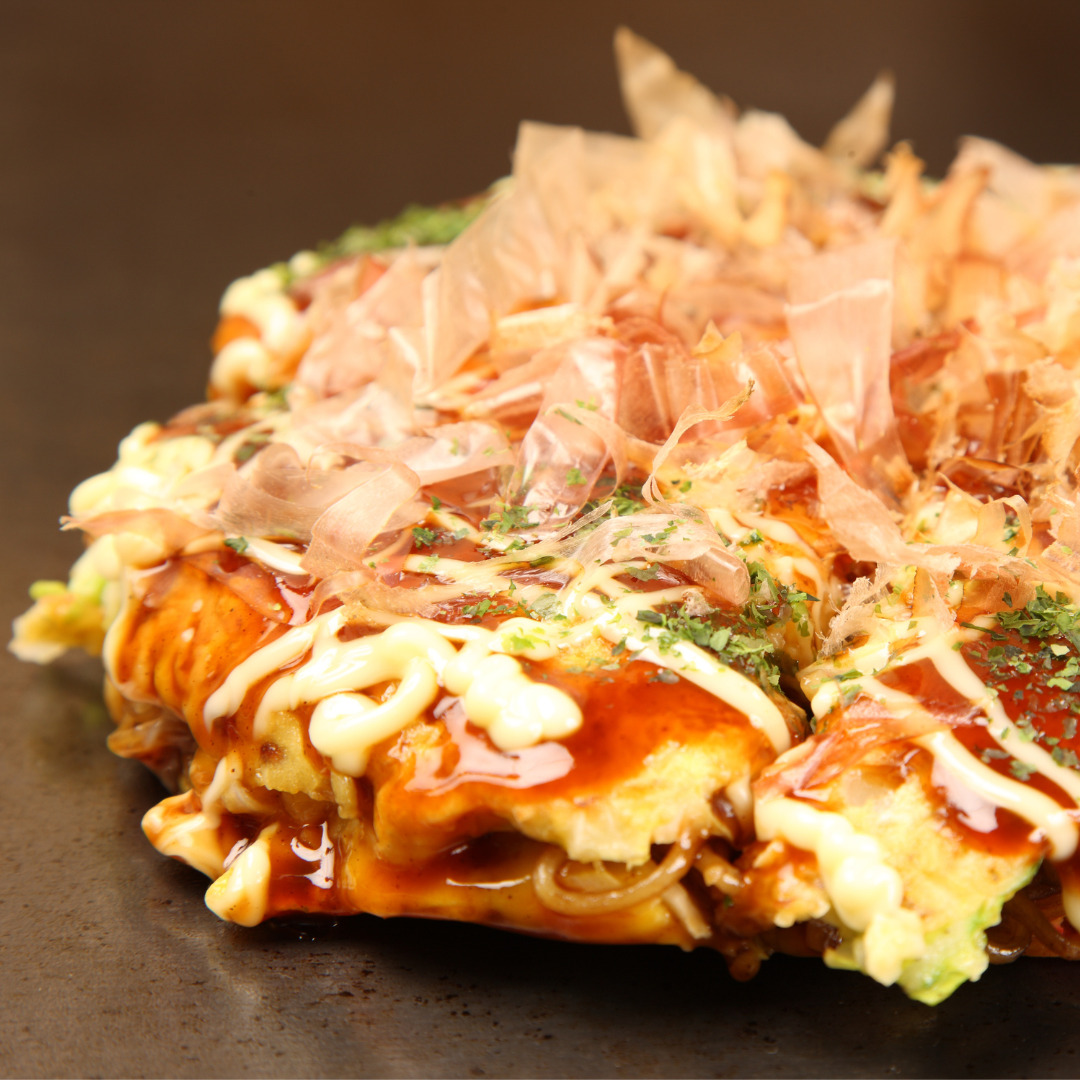 |
2. Takoyaki
Prefectures : Osaka Prefecture Classification : Others Comment : Takoyaki is also a symbol of Osaka food culture. However, its origin is said to be Akashiyaki in Hyogo Prefecture. Akashiyaki is dipped in dashi stock, and Osaka takoyaki is eaten with sauce. It has been selected as one of the Ministry of Agriculture, Forestry and Fisheries’ “Local dishes loved by the nation” and “Our Regional Cuisines”.  |
3. Obanzai
Prefectures : Kyoto Classification : Others Comment : Obanzai is a home cooking in Kyoto. Seasonal ingredients such as seasonal Kyoto vegetables are used. There are 37 traditional Kyoto vegetables, including Shogoin radish, Shogoin turnip, Kamo eggplant, and Kujo green onion. 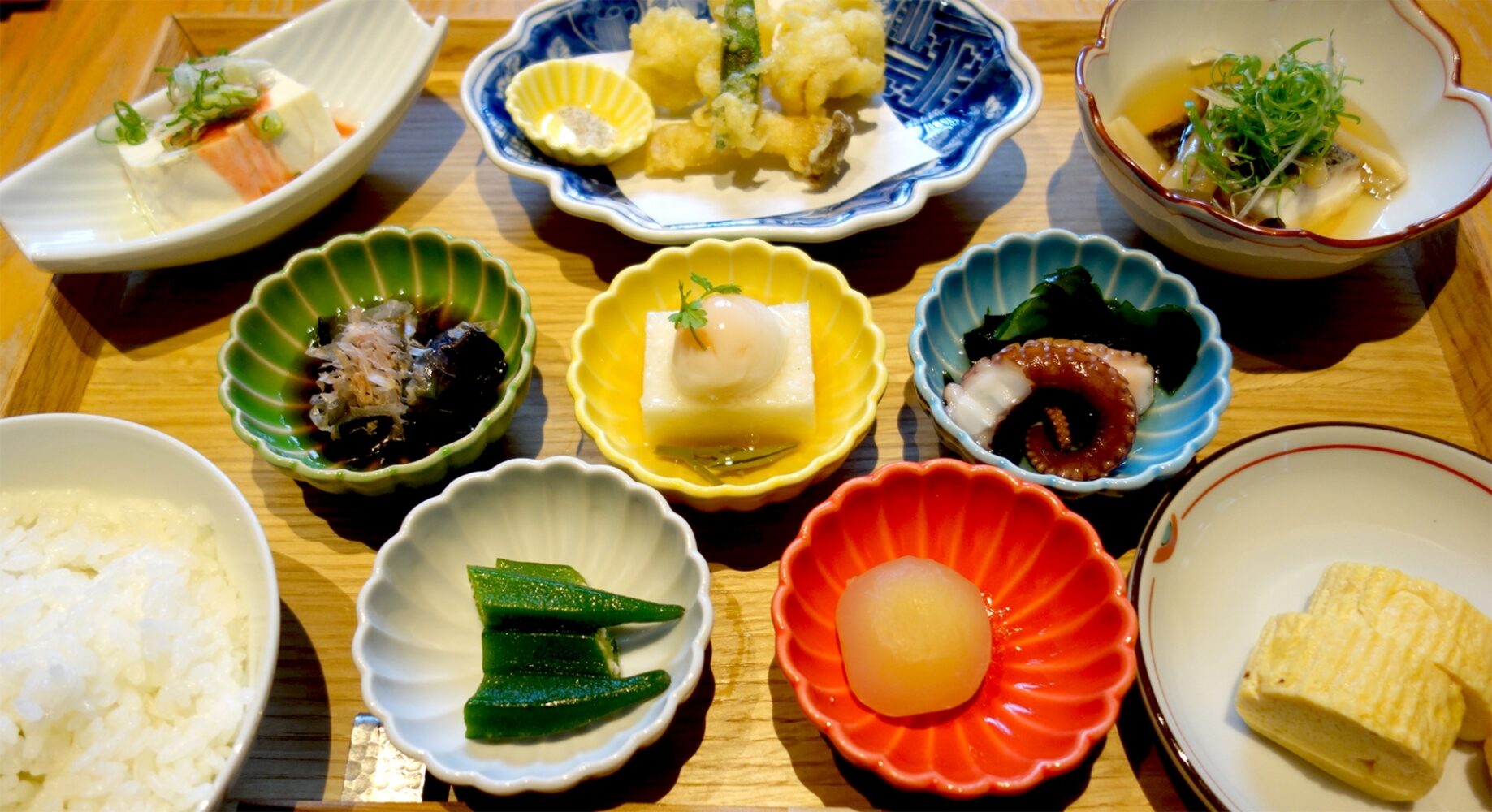 |
4. Meat and potatoes
Prefectures : Kyoto Classification : Meat dish Comment : Nikujaga, a national home-cooked dish, originated in Maizuru City, Kyoto. Nikujaga was a dish that was made instead of beef stew in Maizuru naval port during the Meiji period.  |
5. Warabimochi
Prefectures : Nara Prefecture Classification : Sweets Comment : Warabi mochi is a Japanese sweet made by adding water and sugar to bracken flour and then cooling it. In particular, warabi mochi became a specialty of Nara Prefecture, as it was a famous production area for bracken starch. It has been selected as one of the Ministry of Agriculture, Forestry and Fisheries’ “Our Regional Cuisines.” 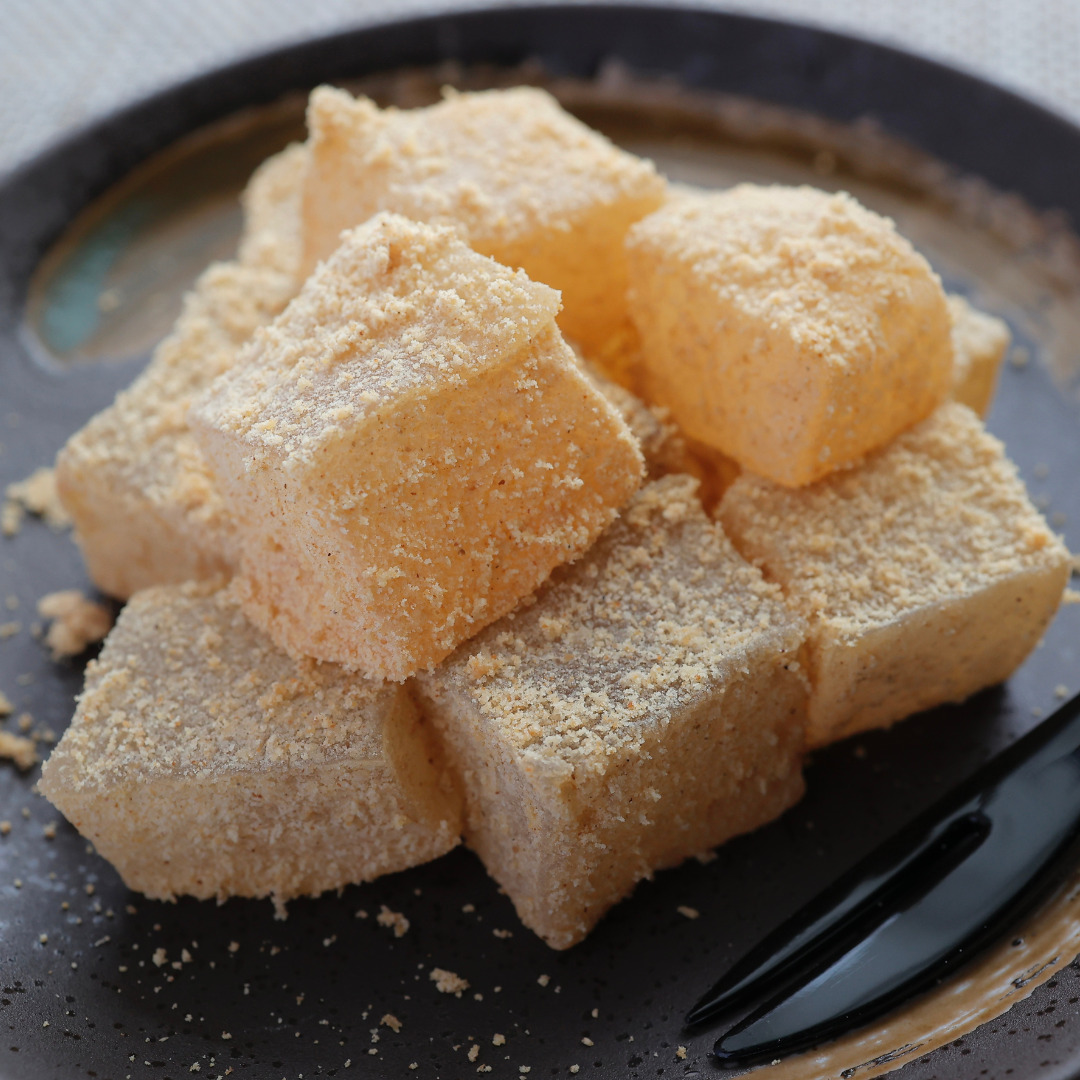 |
6. Spiny lobster
Prefectures : Mie Prefecture Classification : Seafood Comment : Spiny lobster is in season from October to April. Spiny lobster is delicious as sashimi, grilled, or in miso soup. Selected as Mie Prefecture’s “PRIDE FISH” by the National Federation of Fisheries Cooperative Associations. 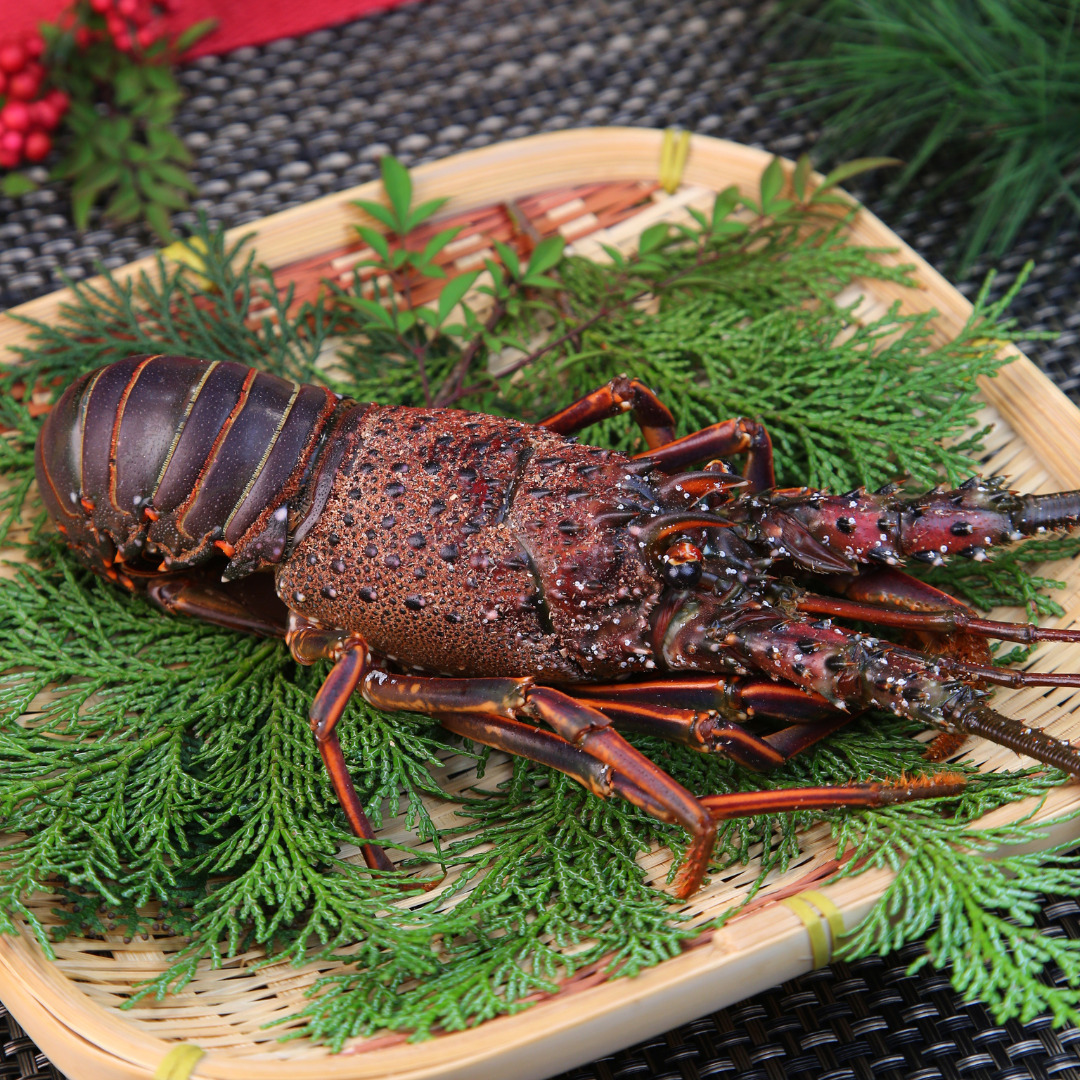 |
7. Kyoto Ramen
Prefectures : Kyoto Classification : Others Comment : There are three types of Kyoto ramen: pork bone soy sauce ramen, backfat ramen, and white chicken broth ramen. All of them are characterized by their thick and rich soup. 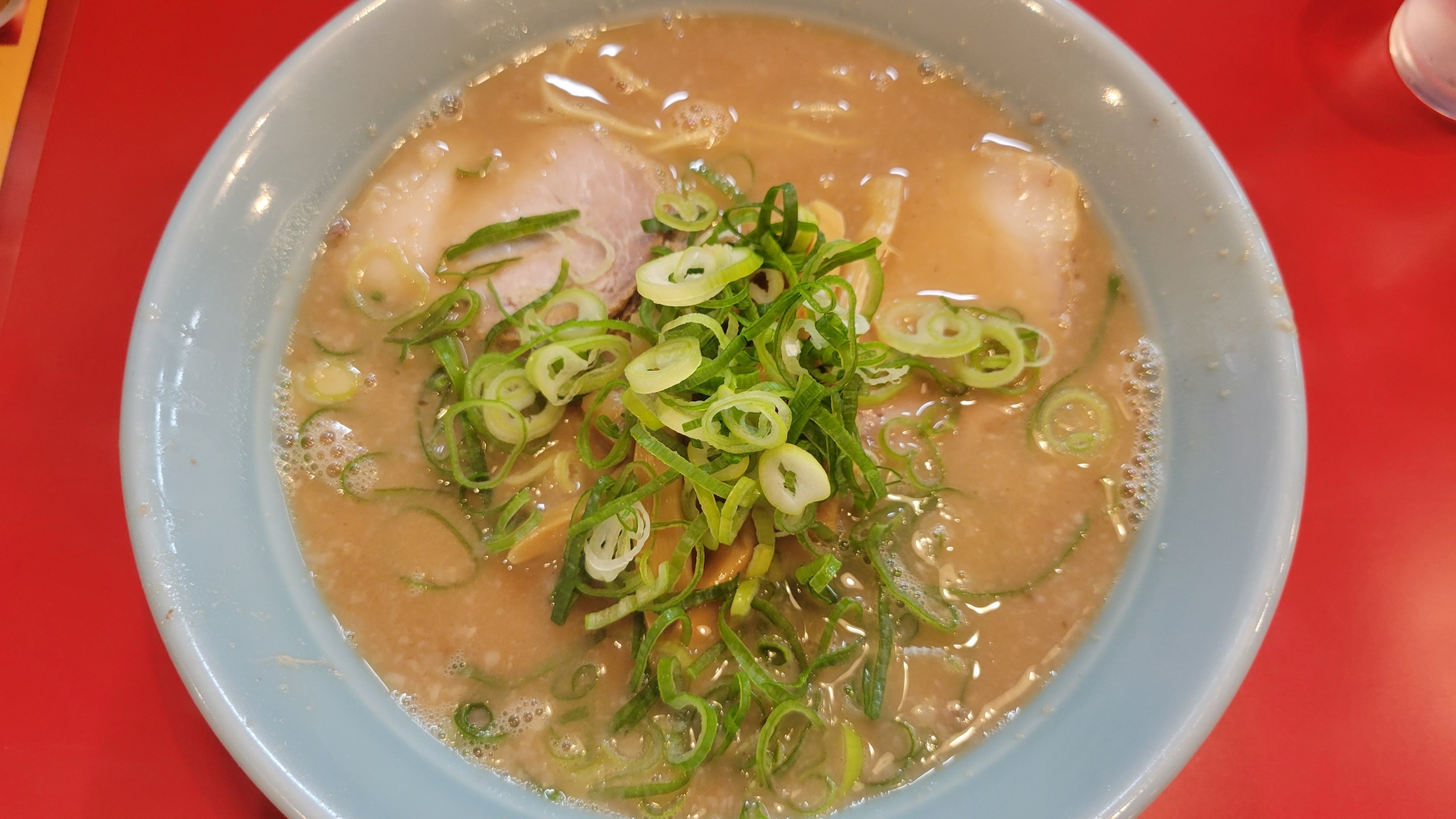 |
8. Beef cutlet
Prefectures : Kyoto Classification : Meat dish Comment : In contrast to pork cutlets in the Kanto region, which has a pork culture, gyukatsu spread in Kansai, which has a beef culture. “Beef Cutlet Kyoto Katsu Beef” is famous in Kyoto and nationwide. 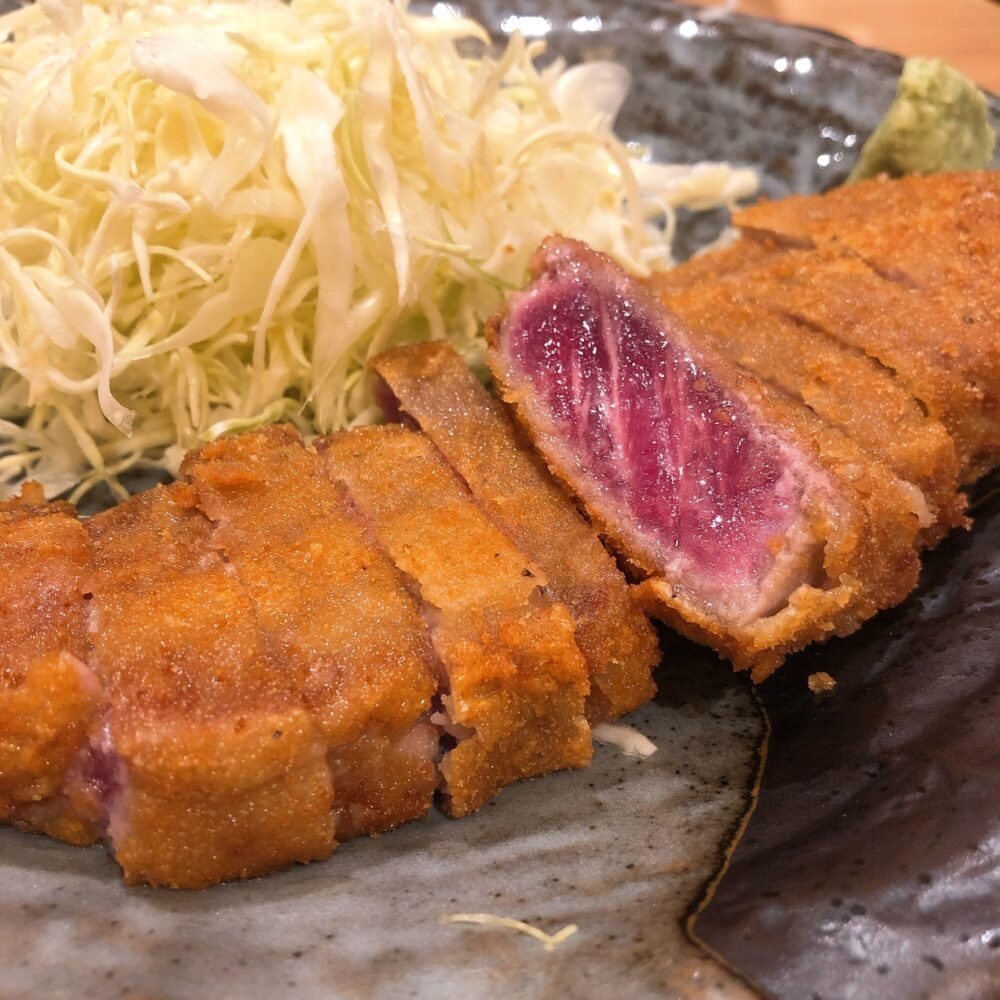 |
9. Whitebait bowl
Prefectures : Wakayama Prefecture Classification : Donburi Comment : “Shirasu-don” is a bowl of boiled whitebait on top of hot rice. It has been selected as one of the Ministry of Agriculture, Forestry and Fisheries’ “Our Regional Cuisines.” In addition, “Wakayama Prefecture Whitebait” has been selected as Wakayama Prefecture’s “PRIDE FISH” byJapan Fisheries Co-operative. The best seasons are spring and autumn. 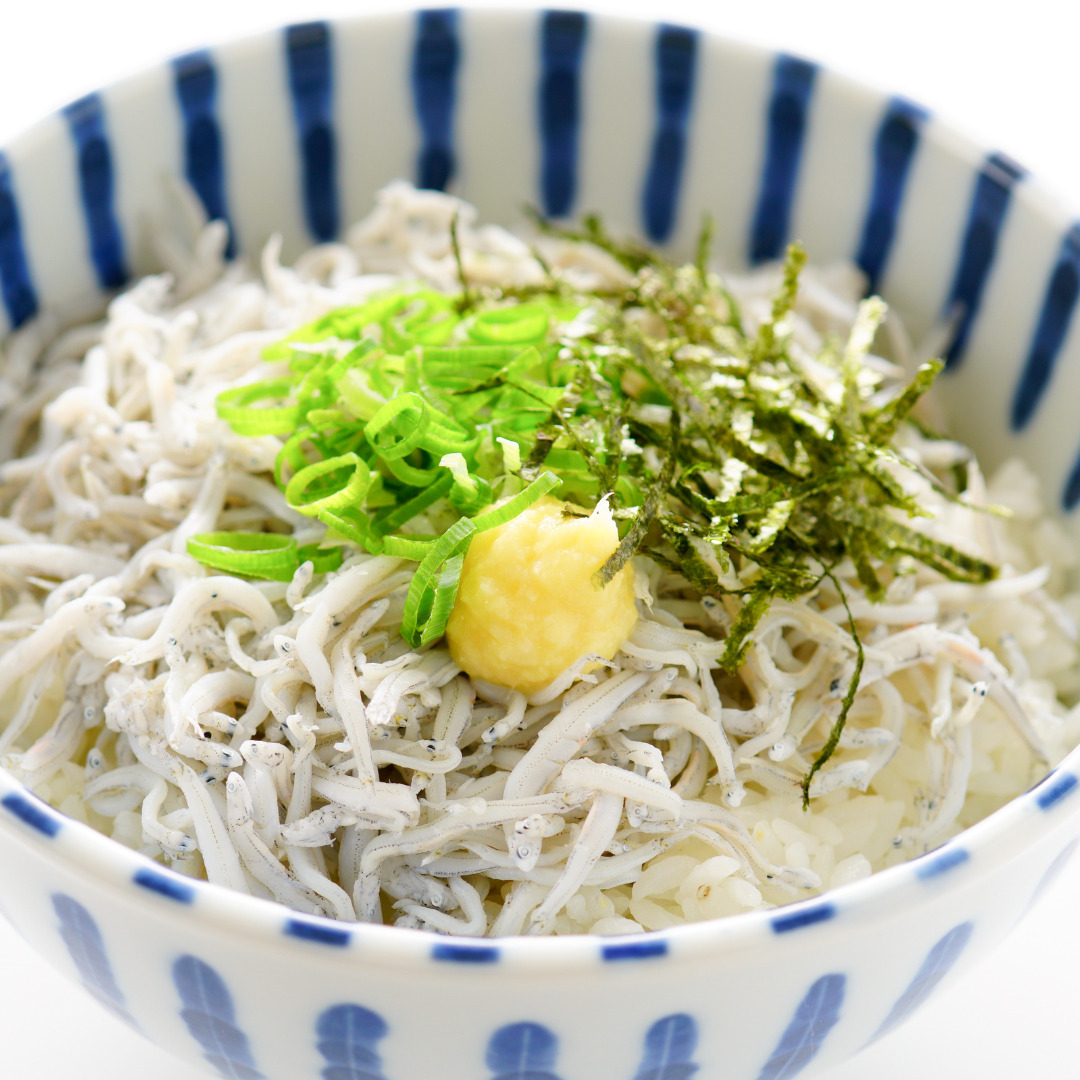 |
10. Oriental Medicinal dishes
Prefectures : Nara Prefecture Classification : Others Comment : In the Asuka period (592-710), Kampo medicine was introduced from mainland China and included ingredients and dishes. Medicinal cuisine arranged in a modern style is a dish unique to Nara Prefecture, the ancient capital. 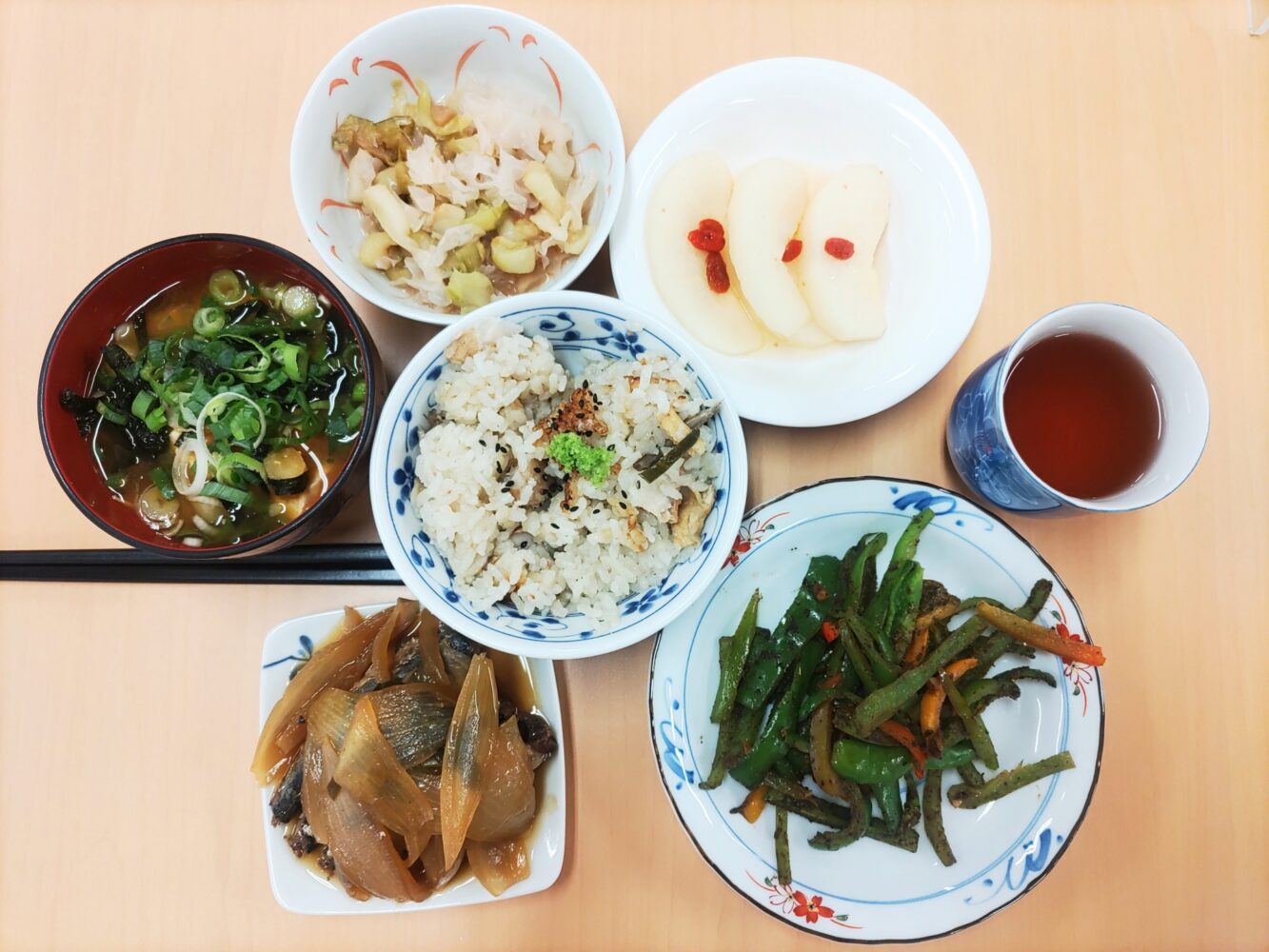 |
11. Pork bun
Prefectures : Hyogo Prefecture Classification : Others Comment : Nankinmachi, Kobe’s Chinatown, has many shops specializing in pork buns. Even the pork bun skin is flavored and delicious. They are often bought as souvenirs. 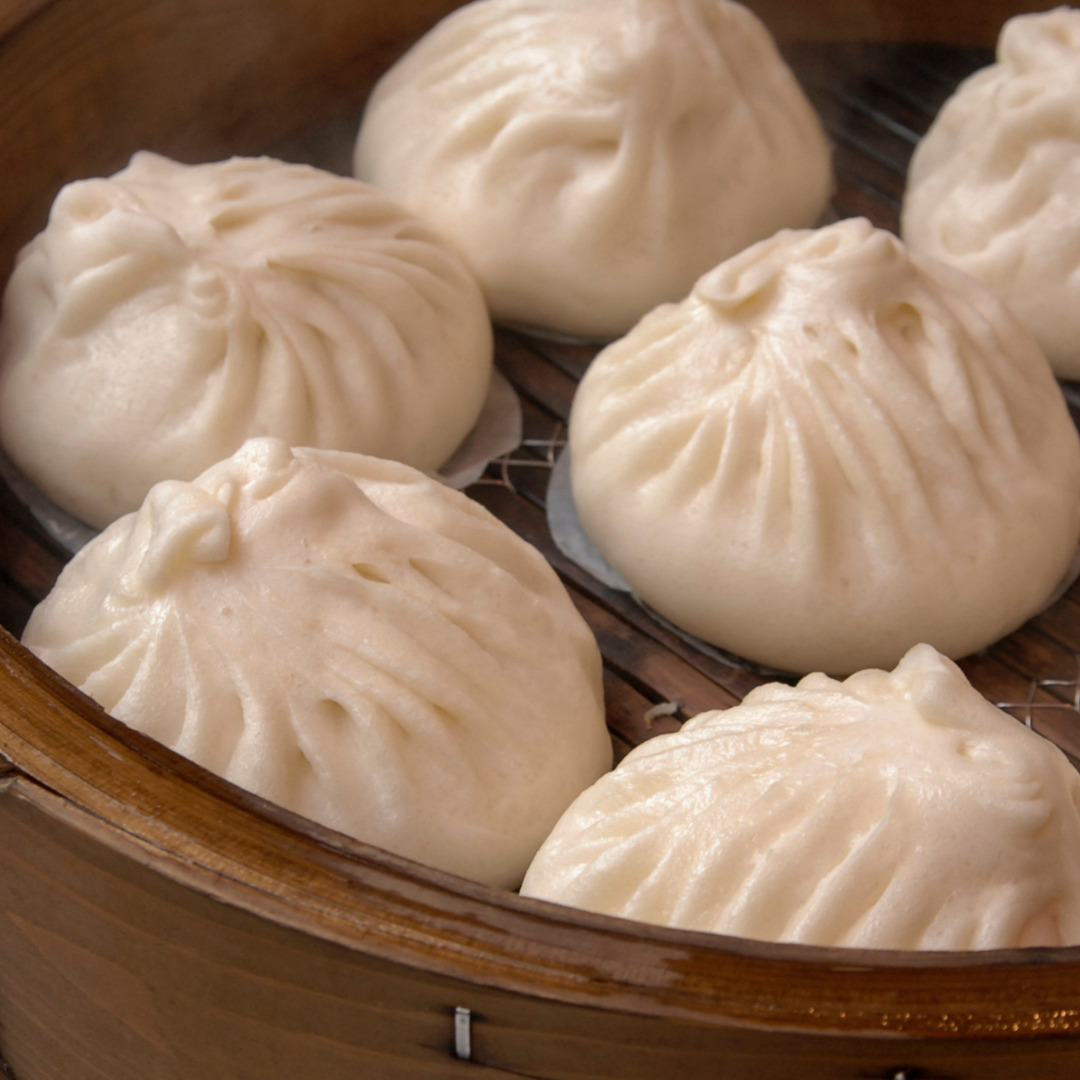 |
12. Boiled tofu
Prefectures : Kyoto Classification : Others Comment : Kyoto is blessed with high-quality underground water and fresh water, which are indispensable for tofu, so it is possible to make delicious tofu. Yudofu, which uses tofu with an elegant flavor, is a winter tradition. 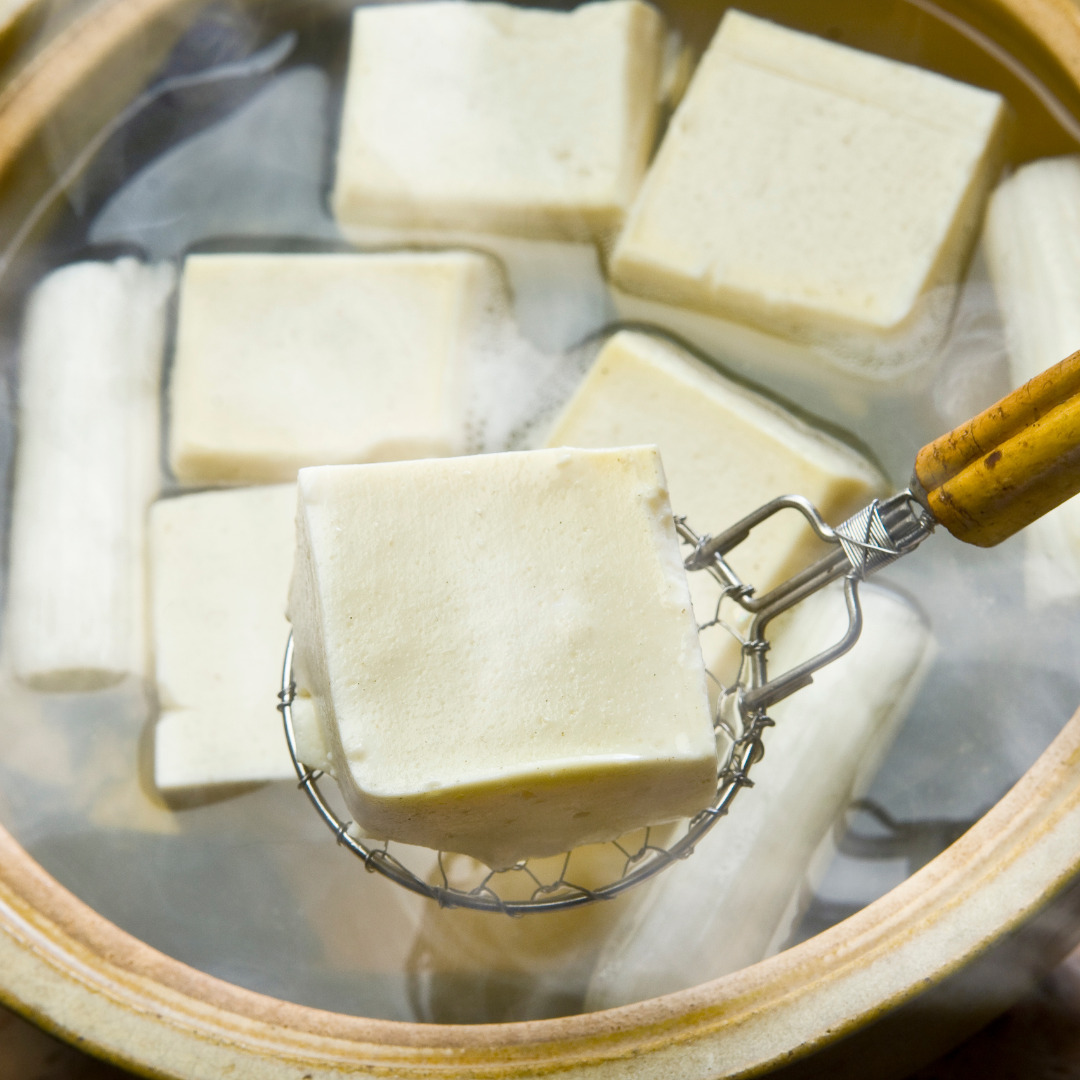 |
13. Yuba
Prefectures : Kyoto Classification : Others Comment : Yuba is an essential ingredient in vegetarian and kaiseki cuisine. Like tofu, yuba is made only from soybeans and water, and it is made possible by Kyoto’s high-quality water. In Kyoto, there is also a dish called “yuba” donburi. 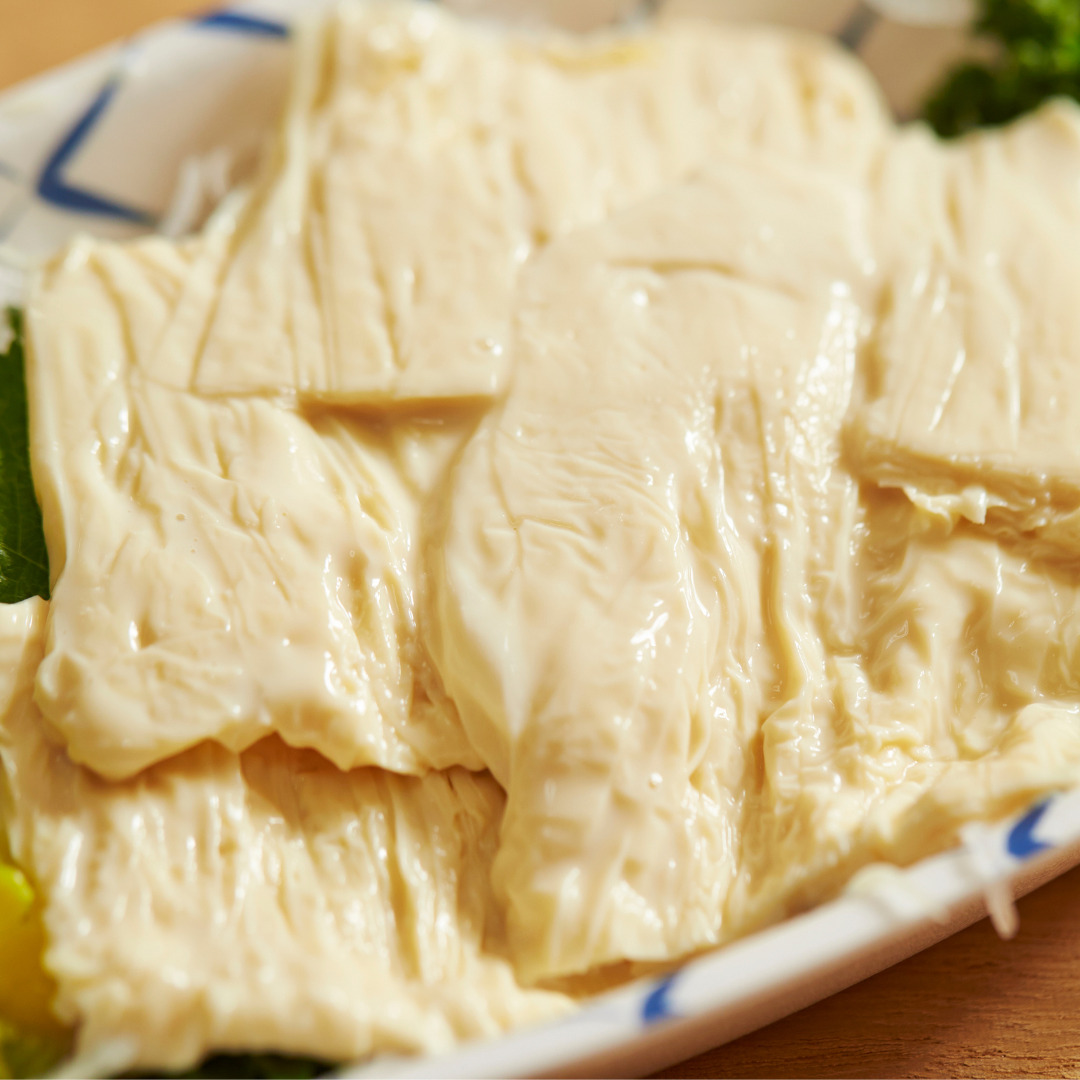 |
14. Ise Udon
Prefectures : Mie Prefecture Classification : Udon Comment : Ise udon is a thick udon noodle without firm texture. It began to be served by pouring dipping sauce over noodles that had been kept boiling so that visitors to Ise could eat them right away. It has been selected as one of “100 selections of local dishes” and “Our Regional Cuisines” by the Ministry of Agriculture, Forestry and Fisheries. 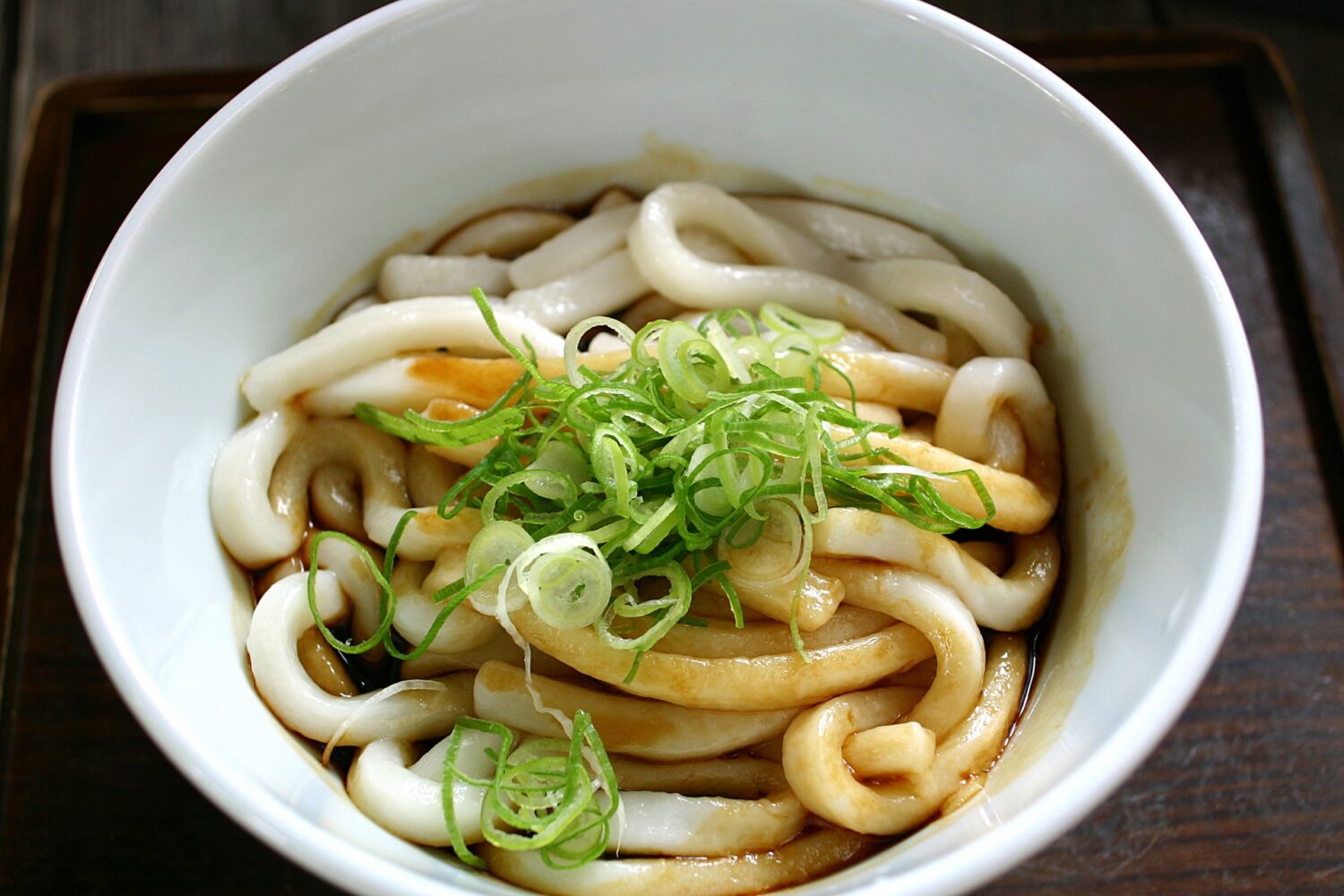 |
15. Kyoto vegetables
Prefectures : Kyoto Classification : Others Comment : Kyoto vegetables are indispensable for Shojin cuisine. There are 37 traditional Kyoto vegetables, including Shogoin radish, Shogoin turnip, Kamo eggplant, and Kujo green onion. 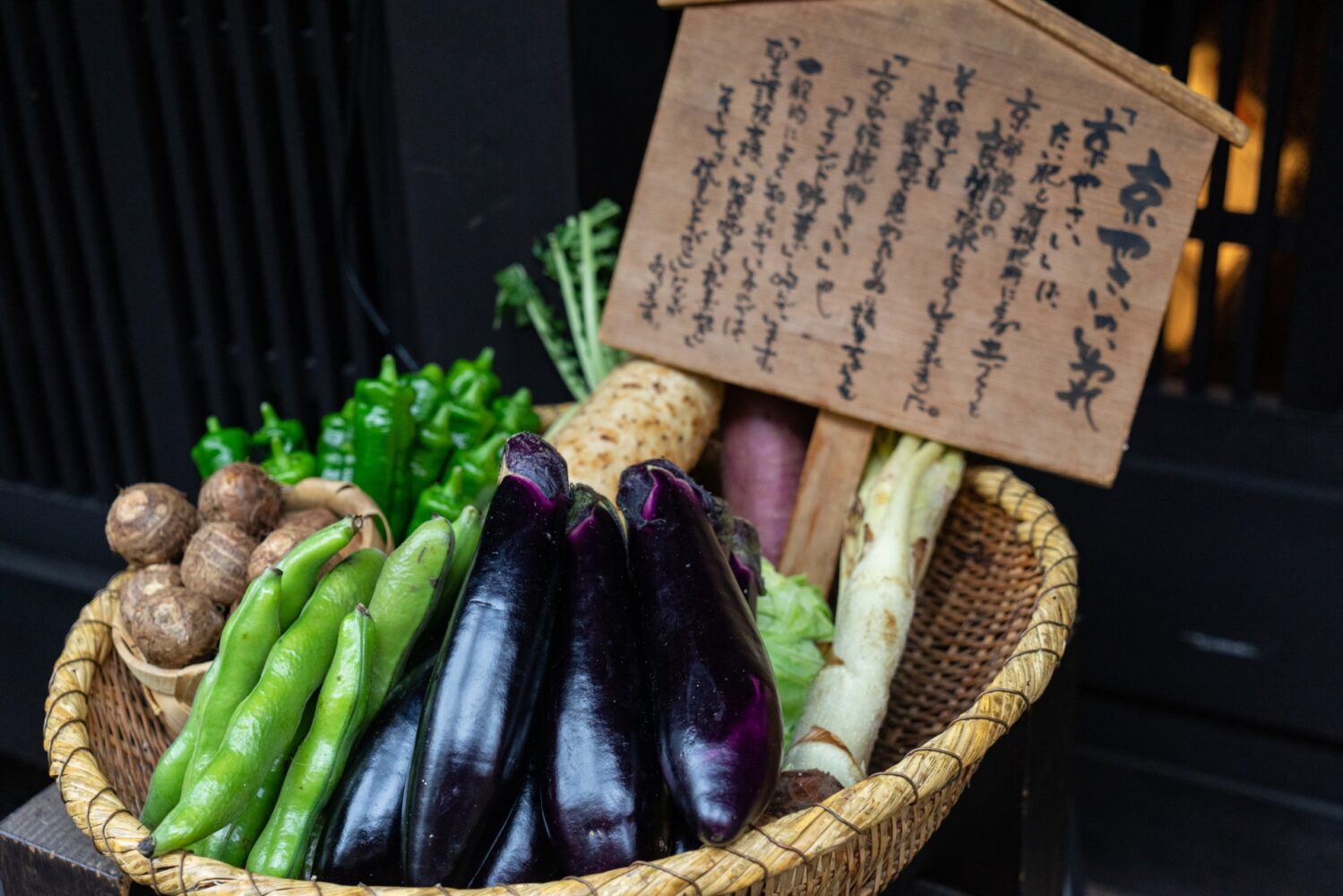 |
16. Koya-tofu
Prefectures : Wakayama Prefecture Classification : Others Comment : Kori-dofu made in Koyasan spread throughout the country as a dish of Shojin cuisine. Koya-dofu is made by freezing tofu, aging it at a low temperature, and then drying it. 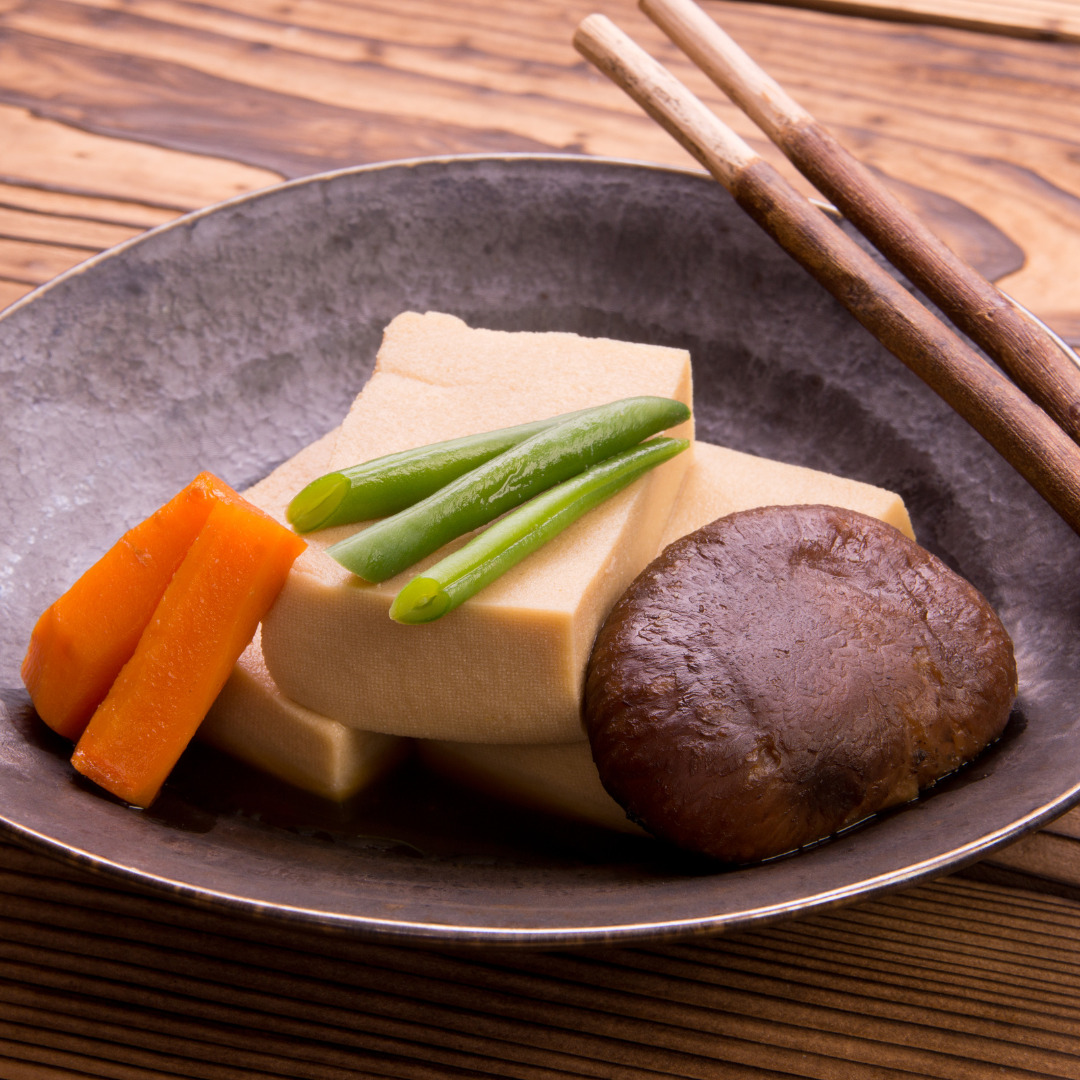 |
17. Grilled offal
Prefectures : Osaka Prefecture Classification : Meat dish Comment : Osaka is said to be the birthplace of offal dishes. The origin of the word “hormone” is the Kansai dialect “harumon” (something to throw away). With the improvement of refrigeration technology, the preservation condition has improved, and the horumon’s peculiar smell is disappearing. 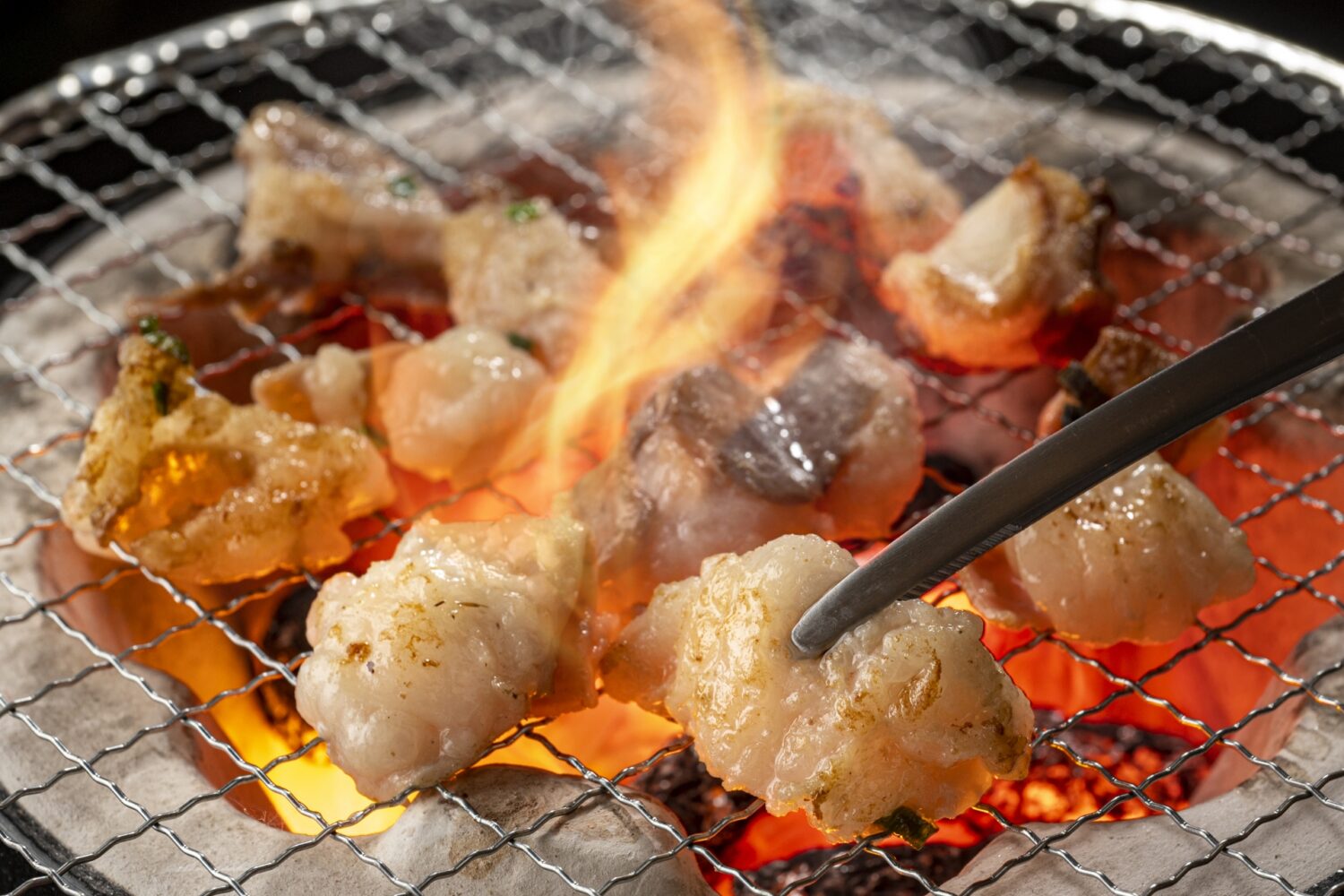 |
18. Akashiyaki
Prefectures : Hyogo Prefecture Classification : Others Comment : Unlike takoyaki in Osaka, it is eaten with dashi broth. In Akashi, it is called Tamagoyaki. It has been selected as one of the Ministry of Agriculture, Forestry and Fisheries’ “Local dishes loved by the nation” and “Our Regional Cuisines”. 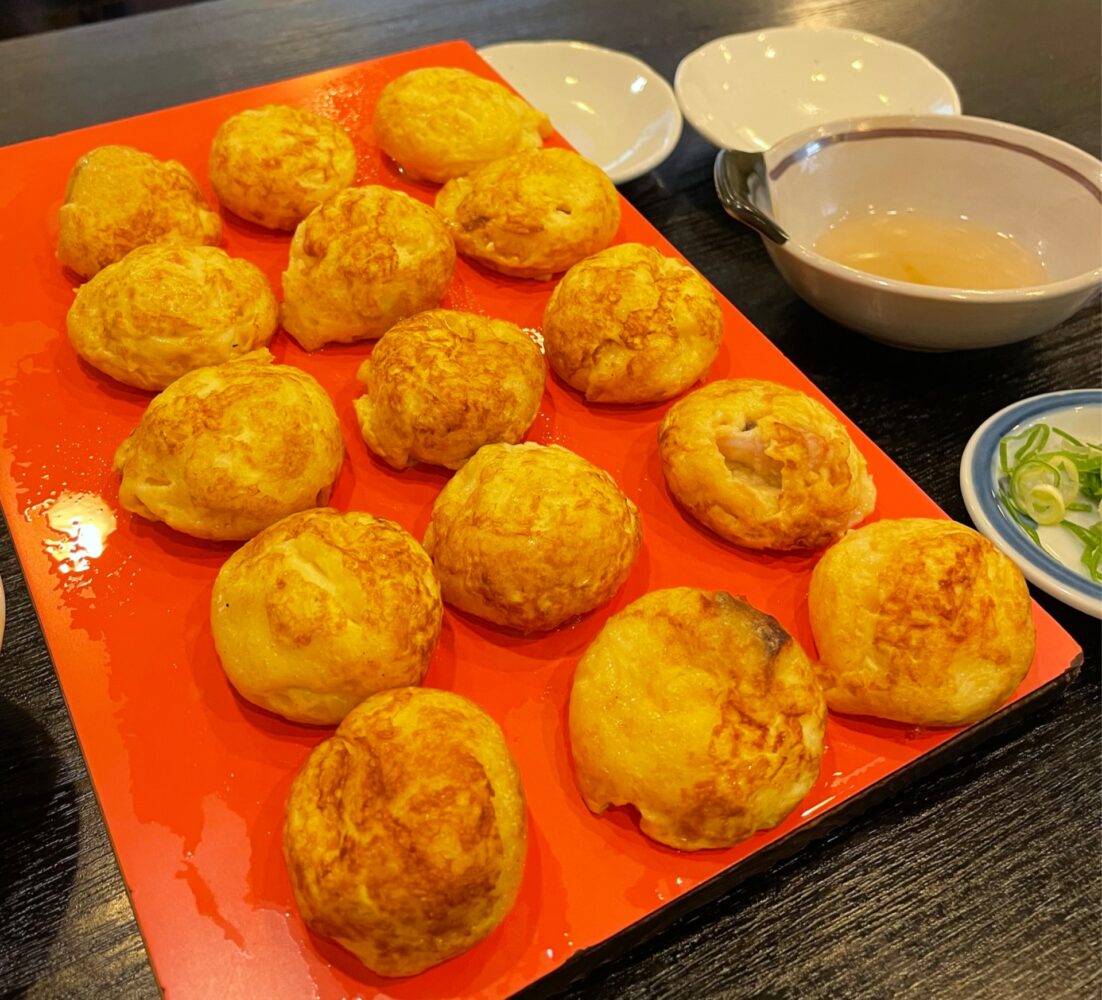 |
19. Kushikatsu
Prefectures : Hyogo Prefecture Classification : Meat dish Comment : Like Osaka Prefecture, Hyogo Prefecture is also famous for kushikatsu. Unlike in Osaka, the batter is thicker and many restaurants offer two types of sauces. 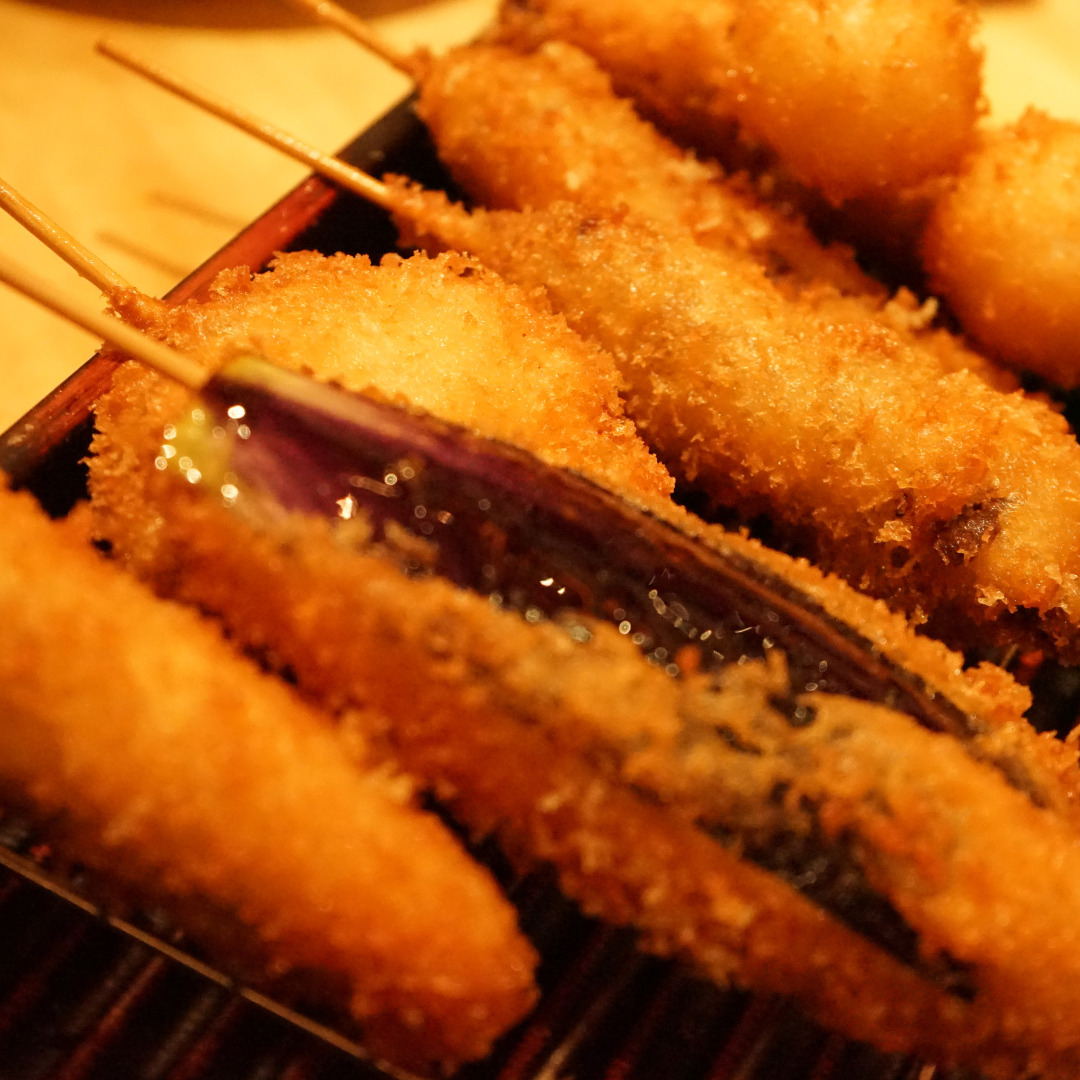 |
20. Shojin ryori
Prefectures : Wakayama Prefecture Classification : Others Comment : Shojin ryori is a dish served to visitors to Kongobu-ji Temple on Mt. Koya. Do not use animal products such as meat or fish. Kaiseki cuisine is derived from Shojin cuisine. The food eaten by monks in training and shojin ryori are completely different things. 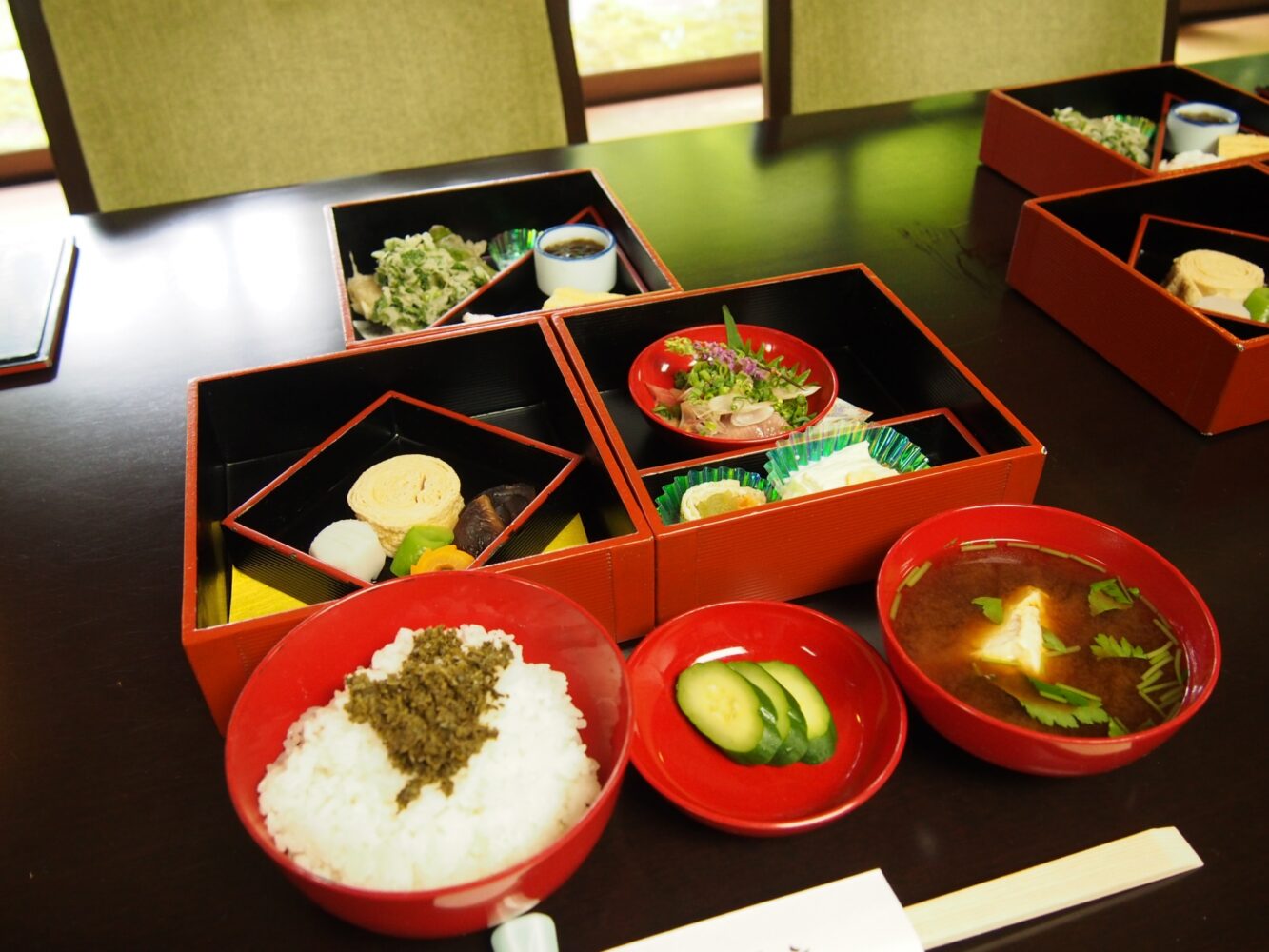 |
21. Raw whitebait bowl
Prefectures : Hyogo Prefecture Classification : Donburi Comment : A rice bowl topped with fresh whitebait from Awaji Island in Hyogo Prefecture. The season is from May to November. Selected as Hyogo Prefecture’s “PRIDE FISH” by Japan Fisheries Co-operative.  |
22. Deep-fried Tatsuta
Prefectures : Nara Prefecture Classification : Fried food Comment : Tatsuta-age is a dish around the Tatsuta River, such as Ikoma City and Ikaruga Town in Nara Prefecture. Chicken karaage is fried with wheat flour, but Tatsutaage is seasoned with soy sauce and then fried with potato starch. 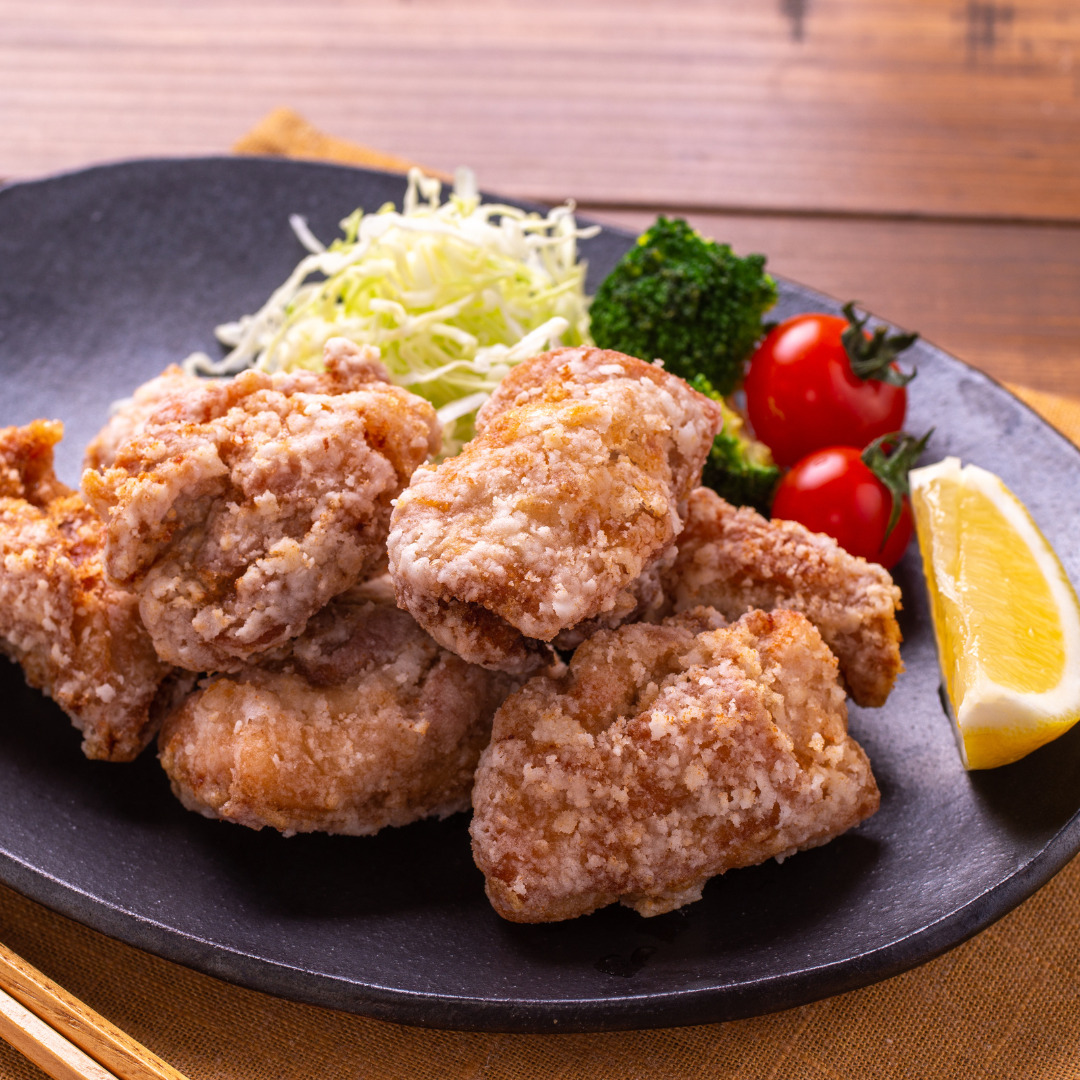 |
23. Mackerel sushi
Prefectures : Shiga Prefecture Classification : Others Comment : The Saba Kaido, which transported mackerel caught in Wakasa Bay to Kyoto, also had a Kosai route through Lake Biwa. This is why mackerel sushi has become a local dish in Shiga Prefecture, which has no sea. It has been selected as one of the Ministry of Agriculture, Forestry and Fisheries’ “Our Regional Cuisines.” 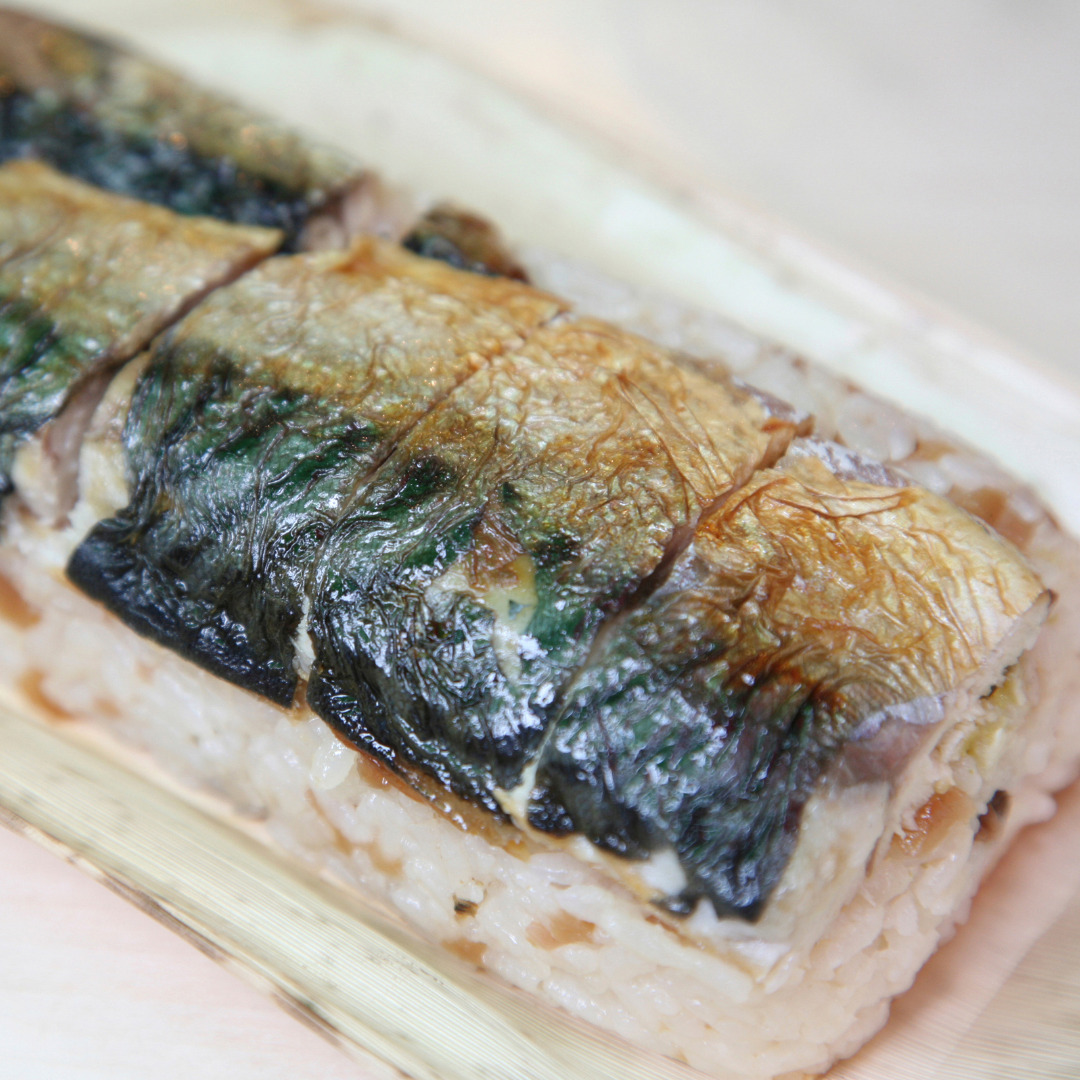 |
24. Cha soba
Prefectures : Kyoto Classification : Soba Comment : Cha soba is buckwheat flour mixed with Uji matcha. It is mainly produced as dried noodles. Cha soba was already eaten in the Edo period. 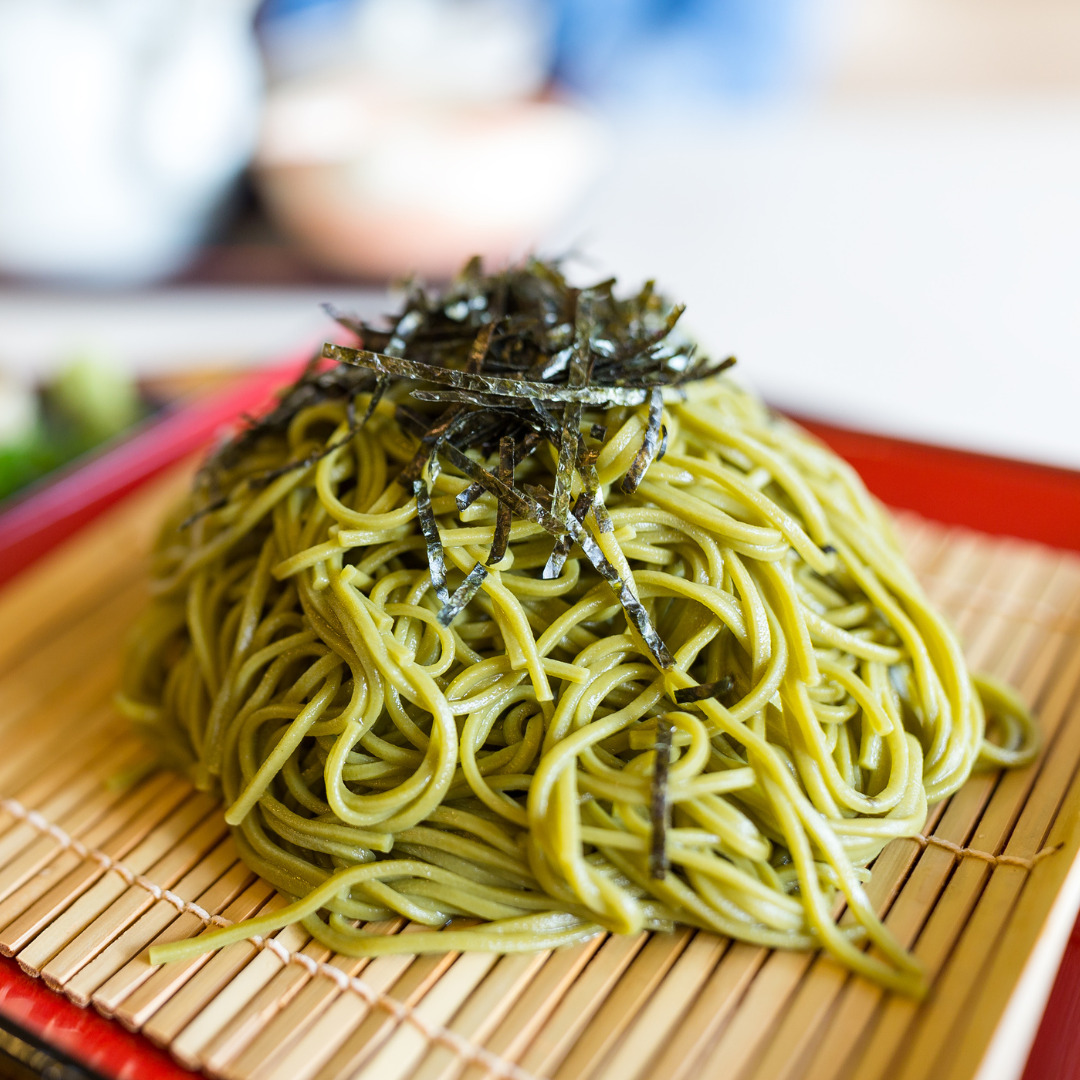 |
25. Takashima Ton-chan
Prefectures : Shiga Prefecture Classification : Meat dish Comment : “Seasoned Kashiwa” that can be eaten in Takashima City, Shiga Prefecture. A dish in which chicken kashiwa is seasoned with miso sauce or soy sauce sauce and grilled. Originating from Torinaka Main Store. 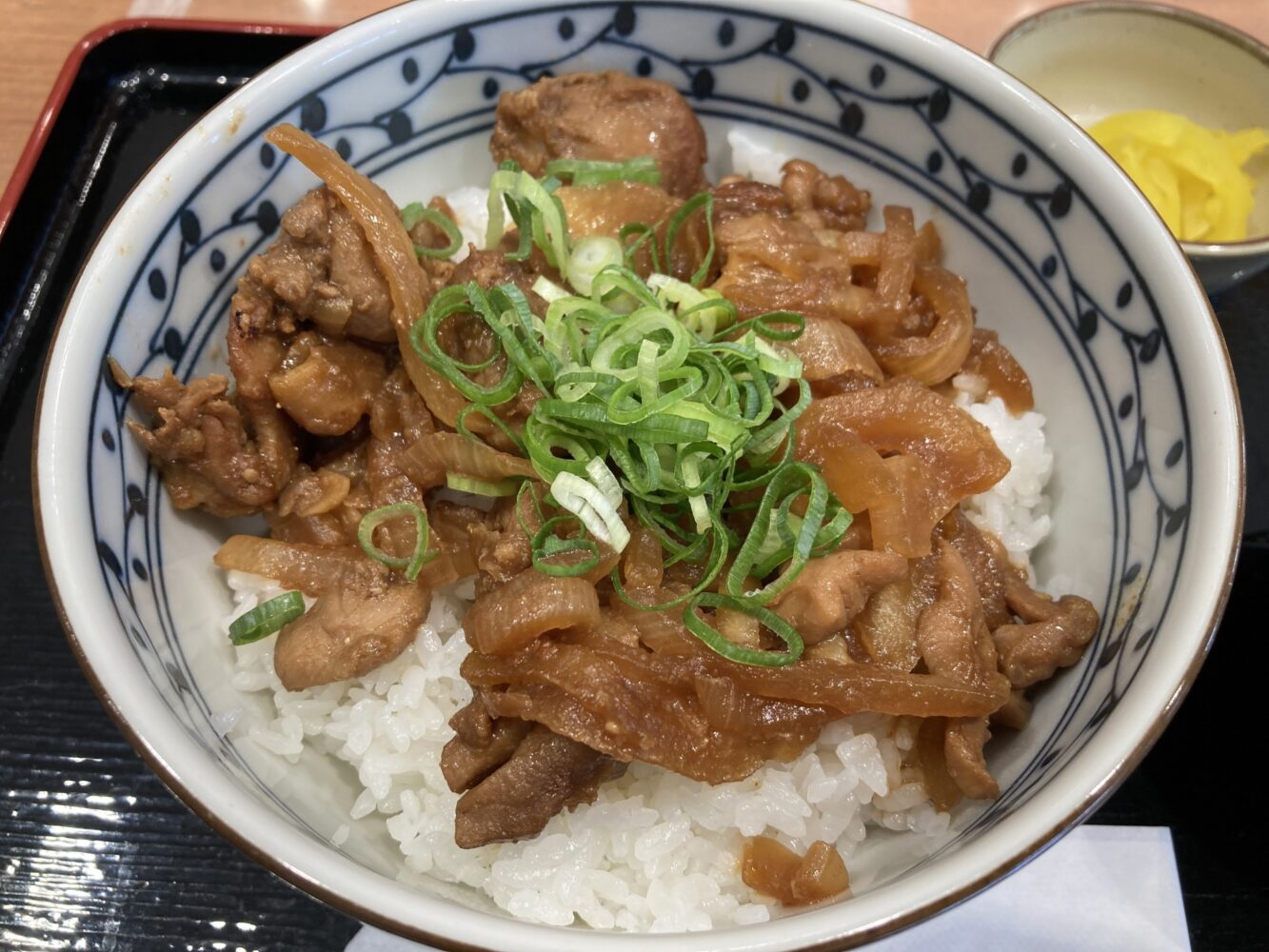 |
26. Saikyo-yaki
Prefectures : Kyoto Classification : others Comment : Saikyo-zuke is made by marinating fish or meat in Saikyo miso from Kyoto. Saikyo-yaki is made by grilling this Saikyo-zuke. 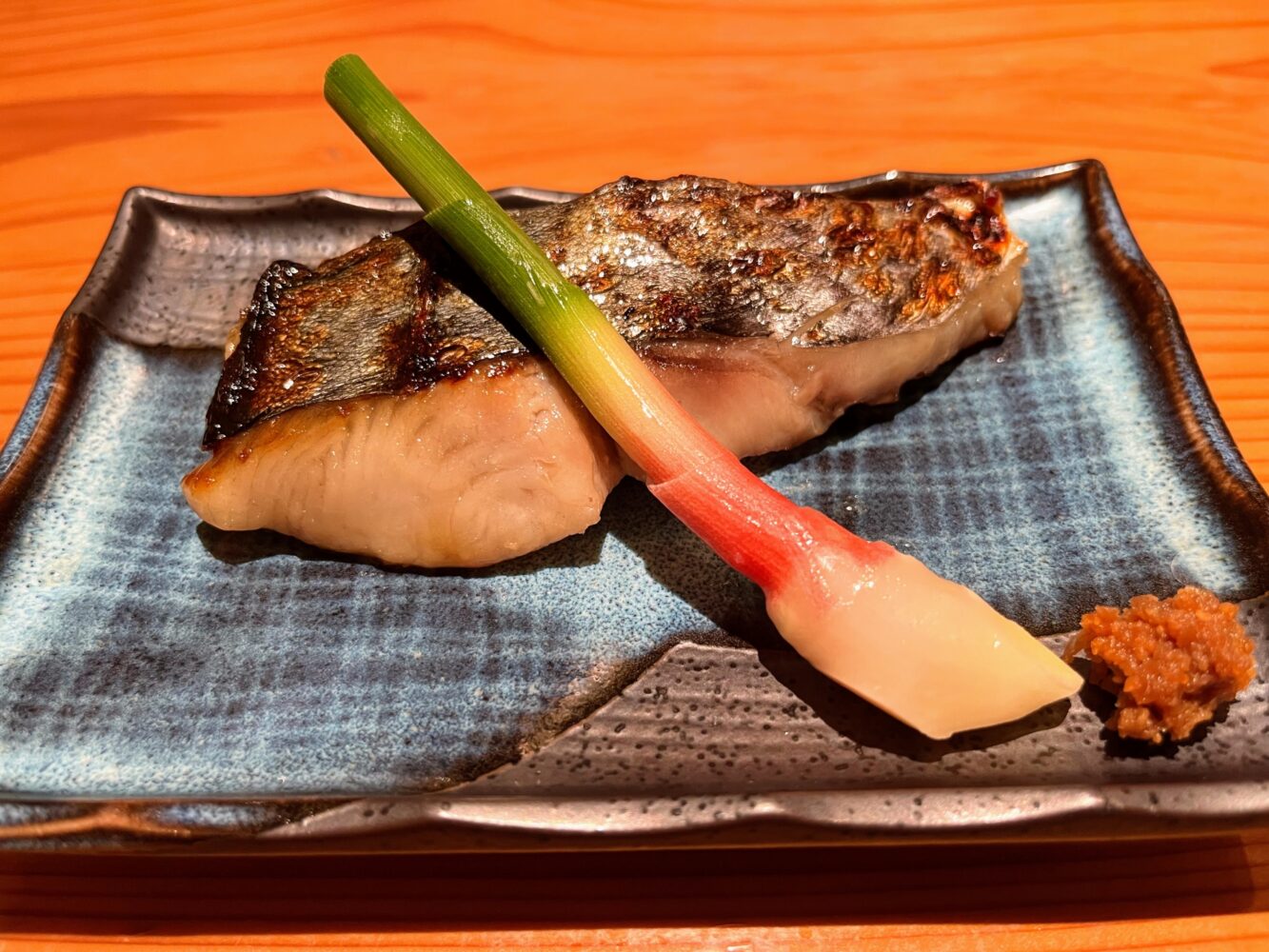 |
27. Modern yaki
Prefectures : Osaka Prefecture Classification : Others Comment : Modern-yaki is Osaka’s okonomiyaki with yakisoba added. It is a different food from the thin crust Hiroshima-style okonomiyaki.  |
28. Sesame tofu
Prefectures : Wakayama Prefecture Classification : Others Comment : A dish of vegetarian cuisine developed in Koyasan. Sesame and Yoshino arrowroot are raw materials. Sesame is said to have been brought back from Tang by Kukai (the ambassador for the spread of the law). It has been selected as one of the Ministry of Agriculture, Forestry and Fisheries’ “Our Regional Cuisines.” 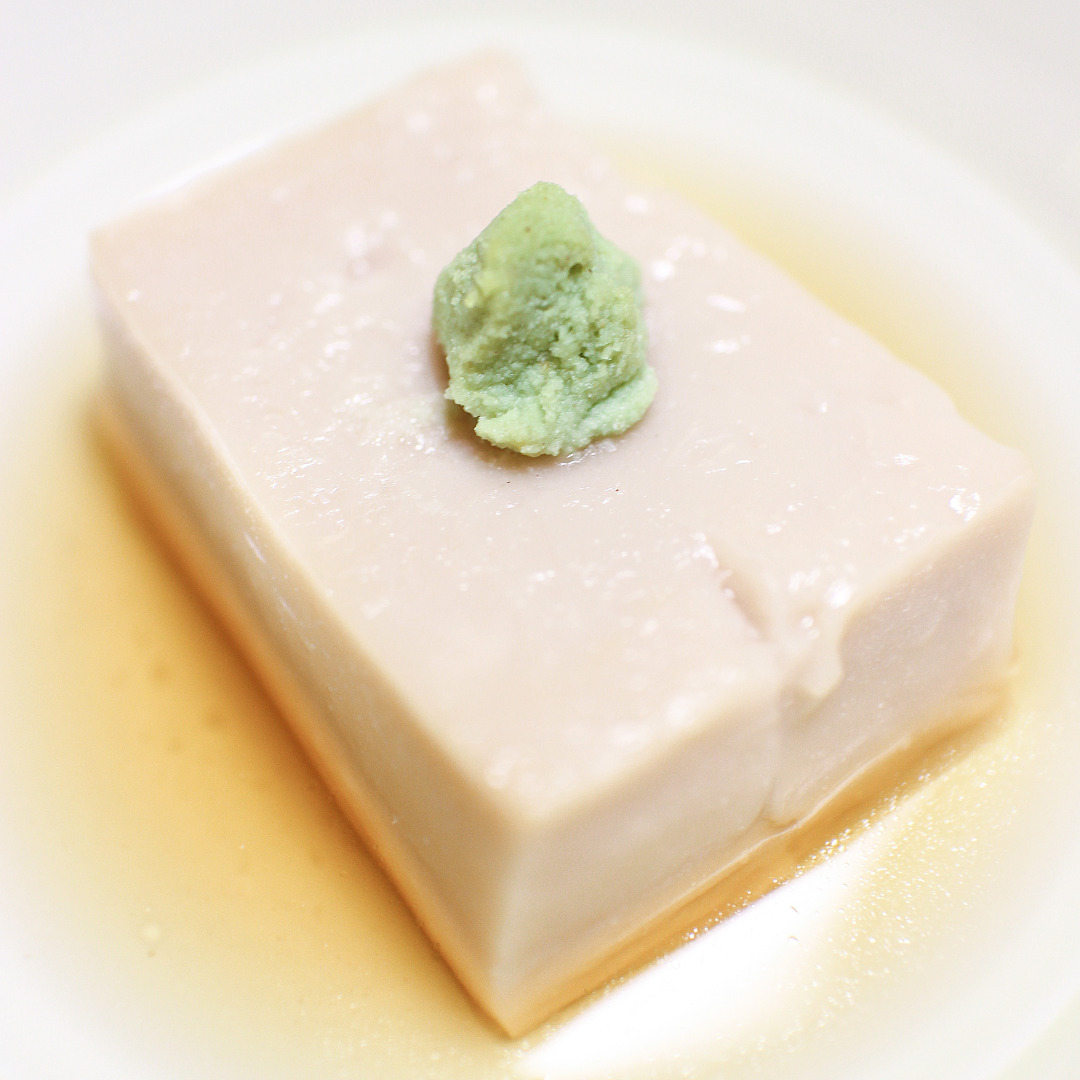 |
29. Duck hot pot
Prefectures : Shiga Prefecture Classification : Hot pot / Soup Comment : A hot pot made with mallards that fly to Lake Biwa. Duck hunting is only available in winter from November to March. It has been selected as one of the “100 selections of local dishes” and “Our Regional Cuisines” by the Ministry of Agriculture, Forestry and Fisheries.  |
30. Kakinoha sushi (Persimmon Leaf Sushi)
Prefectures : Nara Prefecture Classification : Others Comment : A dish of mackerel wrapped in persimmon leaves together with vinegared rice. Astringent persimmon leaves, which are rich in tannin, are used for persimmon leaves. It has been selected as one of the “100 selections of local dishes” and “Our Regional Cuisines” by the Ministry of Agriculture, Forestry and Fisheries. 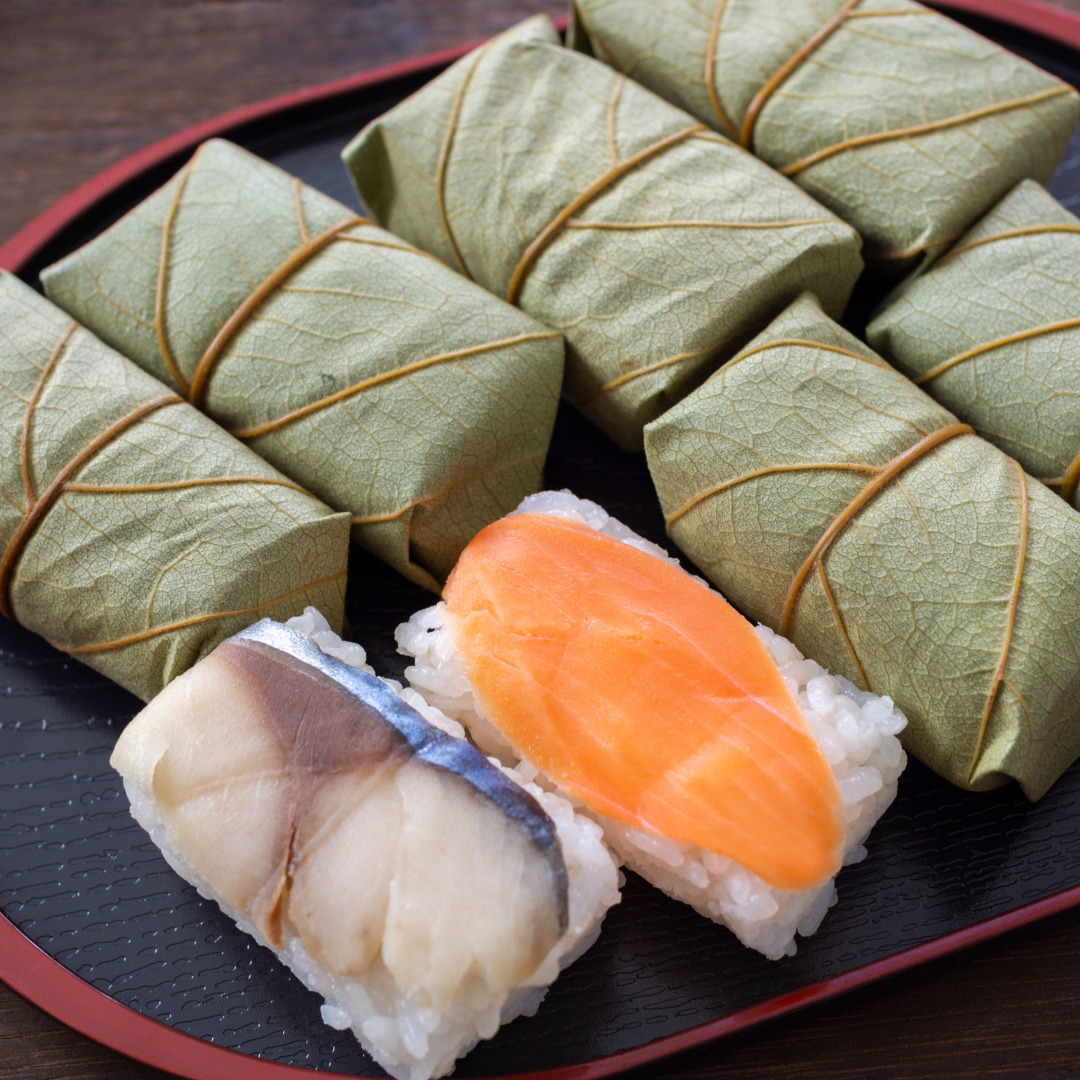 |
The “100 selections of local dishes,” “Local dishes loved by the nation,” and “Our Regional Cuisines,” were selected by the Ministry of Agriculture, Forestry and Fisheries.
“PRIDE FISH” was selected by Japan Fisheries Co-operative.
目錄
1、說明簡介
日本各地存在着各式各様的地方美食。這些於當地耳熟能詳的獨特菜餚被稱為“鄉土美食”、“B級美食”、“靈魂料理”等等、不管在國內或國外都十分受歡迎。其中近年開始出現西餐、中餐等種類的地方美食。
而“鄉土料理” 是指那些擁有 100多年歷史、其中大部分是使用當地食材或参考當地的飲食文化製作而成的日本料理。
可以說,很多地方美食都是長年受到當地人的熱烈支持而承傳下來、所以基本上地方美食的味道都有一定水準。
但是對於旅行時間有限的外國遊客來說、要品嚐所有地方美食是十分困難的事情。 因此、我們匯總了 1000 多種“當地美食” 、“B 級美食”、“靈魂料理”及“鄉土料理”、並按照 SNS 的標籤數量、製作了各地區的美食排名。
希望能透通這排名能了解現時在日本各地、尤其是在年輕人中流行的地方美食、並推薦給各位外國遊客到不同地方、品嚐到當地最熱門的地方美食。
2、地方美食人氣排名(日本關西地區)
1、大阪燒(大阪府)
2、章魚燒(大阪府)
3、御番菜(京都府)
4、馬鈴薯燉肉(京都府)
5、蕨餅(奈良縣)
6、伊勢龍蝦(三重縣)
7、京都拉麵(京都府)
8、炸牛排(京都府)
9、吻仔魚丼(和歌山縣)
10、藥膳料理(奈良縣)
11、豬肉包(兵庫縣)
12、湯豆腐(京都府)
13、豆皮(京都府)
14、伊勢烏龍麵(三重縣)
15、京都蔬菜(京都府)
16、高野豆腐(和歌山縣)
17、烤內臟(大阪府)
18、明石燒(兵庫縣)
19、串炸(兵庫縣)
20、精進料理(和歌山縣)
21、生吻仔魚丼(兵庫縣)
22、龍田炸雞(奈良縣)
23、鯖魚壽司(滋賀縣)
24、茶蕎麥麵(京都府)
25、高島Tonchan(滋賀縣)
26、西京燒(京都府)
27、摩登燒(大阪府)
28、芝麻豆腐(和歌山縣)
29、鴨肉鍋(滋賀縣)
30、柿葉壽司(奈良縣)
1、大阪燒
都道府縣 : 大阪府 分類 : 其他分類 評論 : 大阪「Konamon」文化的代表。「Konamon」是指使用小麥製作的食物。太平洋戰爭結束後,它作為米食短缺的替代食品被普及。大阪燒被農林水產省評選為“地方人氣鄉土料理”和“我們的鄉土料理”之一。  |
2、章魚燒
都道府縣 : 大阪府 分類 : 其他分類 評論 : 章魚燒是大阪飲食文化的象徵。然而,它的起源是兵庫縣的明石燒。明石燒是浸在高湯中食用,大阪的章魚燒則是淋上醬汁食用。章魚燒被農林水產省評選為“地方人氣鄉土料理”和“我們的鄉土料理”之一。  |
3、御番菜
都道府縣 : 京都府 分類 : 其他分類 評論 : 御番菜是京都的家庭料理。使用當季的京都蔬菜等季節性食材烹飪。京都的傳統蔬菜有聖護院蘿蔔、聖護院蕪菁、賀茂茄子、九條蔥等37種。  |
4、馬鈴薯燉肉
都道府縣 : 京都府 分類 : 肉類料理 評論 : 京都府舞鶴市是國民家庭料理馬鈴薯燉肉的發源地。馬鈴薯燉肉是明治時期在舞鶴軍港代替燉牛肉製作的料理。  |
5、蕨餅
都道府縣 : 奈良縣 分類 : 甜點 評論 : 蕨餅是在蕨粉中加入水和砂糖,加熱後再冷卻製成的和菓子。而奈良縣是蕨粉的盛產地,所以蕨餅也成為了當地特產。蕨餅被農林水產省評選為“我們的鄉土料理”之一。  |
6、伊勢龍蝦
都道府縣 : 三重縣 分類 : 海鮮類 評論 : 伊勢龍蝦的產季是每年10月到隔年4月。伊勢龍蝦做成生魚片、烤著吃,放到味增湯中都很美味。 “伊勢龍蝦”更是由全國漁業協會評選為三重縣的“PRIDE FISH”(代表魚類)。  |
7、京都拉麵
都道府縣 : 京都府 分類 : 其他分類 評論 : 京都拉麵有「豚骨醬油拉麵」、「豬背脂拉麵」、「雞白湯拉麵」三種,特點都是濃厚的湯頭。  |
8、炸牛排
都道府縣 : 京都府 分類 : 肉類料理 評論 : 與位於豬肉文化圈的關東地區的炸豬排相比,位於牛肉文化圈的關西地區流行炸牛排。「炸牛排京都勝牛」在京都乃至全國都享有盛譽。  |
9、吻仔魚丼
都道府縣 : 和歌山縣 分類 : 蓋飯類 評論 : 熱呼呼的米飯上放上剛煮好的吻仔魚便是吻仔魚丼。最美味的季節是春季跟秋季。 “吻仔魚”更是由全國漁業協會評選為和歌山縣的“PRIDE FISH”(代表魚類)。  |
10、藥膳料理
都道府縣 : 奈良縣 分類 : 其他分類 評論 : 飛鳥時代(592年ー710年)從中國傳入的「漢方藥」中也包含食材和料理。改良成現代風味的藥膳料理是古都奈良縣特有的料理。  |
11、豬肉包
都道府縣 : 兵庫縣 分類 : 其他分類 評論 : 神戶中華街(南京町)有很多豬肉包專賣店。豬肉包連的包子皮都很有味道十分可口,很多人買它來當伴手禮。  |
12、湯豆腐
都道府縣 : 京都府 分類 : 其他分類 評論 : 京都擁有製作豆腐不可或缺的優質地下水和清水,所以能製作出美味的豆腐。使用優質的豆腐烹煮的湯豆腐是冬天的特色風味料理。  |
13、豆皮
都道府縣 : 京都府 分類 : 其他分類 評論 : 豆皮是精進料理、懷石料理中不可或缺的食材。像豆腐一樣,只使用大豆跟水製成的豆皮,也受惠於京都優質的水源。在京都還有名為「豆皮」丼的料理。  |
14、伊勢烏龍麵
都道府縣 : 三重縣 分類 : 烏龍麵 評論 : 伊勢烏龍麵是口感軟綿順口的粗烏龍麵。為了讓到伊勢神宮參拜的香客可以立即食用,便開始提供放在鍋內長時間烹煮的麵條拌入日式醬油。伊勢烏龍麵被農林水產省評選為“鄉土料理百選”和“我們的鄉土料理”之一。  |
15、京都蔬菜
都道府縣 : 京都府 分類 : 其他分類 評論 : 京都蔬菜是精進料理中不可獲缺的食材。京都的傳統蔬菜有聖護院蘿蔔、聖護院蕪菁、賀茂茄子、九條蔥等37種。  |
16、高野豆腐
都道府縣 : 和歌山縣 分類 : 其他分類 評論 : 高野山製作的凍豆腐作為精進料理中的一道菜品傳遍全國。高野豆腐是將豆腐冷凍、低溫熟成後再乾燥而成。  |
17、烤內臟
都道府縣 : 大阪府 分類 : 肉類料理 評論 : 大阪是烤內臟的發源地。內臟(horumon)這一詞是從關西方言「要扔掉的東西(hourumon)」而來。隨著冷藏技術的進步,保鮮條件得到改善,內臟獨特的氣味也慢慢的消失了。  |
18、明石燒
都道府縣 : 兵庫縣 分類 : 其他分類 評論 : 與大阪燒不同,是浸在高湯中食用的。在明石又被稱為「玉子燒」。明石燒被農林水產省評選為“地方人氣鄉土料理”和“我們的鄉土料理”之一。  |
19、串炸
都道府縣 : 兵庫縣 分類 : 肉類料理 評論 : 兵庫縣跟大阪府的一樣以串炸聞名。但與大阪不同,兵庫的串炸麵衣很厚、且備有兩種醬汁的店很多。  |
20、精進料理
都道府縣 : 和歌山縣 分類 : 其他分類 評論 : 精進料理是招待高野山金剛峰寺香客的料理,不使用肉類和魚類等葷食。懷石料理也源自於精進料理。此外,修行中的禪宗僧侶食用的料理和精進料理完全不一樣。  |
21、生吻仔魚丼
都道府縣 : 兵庫縣 分類 : 蓋飯類 評論 : 在米飯上放上兵庫縣淡路島捕獲的新鮮生吻仔魚的蓋飯。季節是5月到11月。“吻仔魚”更是由全國漁業協會評選為兵庫縣的“PRIDE FISH”(代表魚類)。  |
22、龍田炸雞
都道府縣 : 奈良縣 分類 : 炸物類 評論 : 龍田炸雞是龍田川附近(奈良縣生駒市和斑鳩町等地區)的料理。炸雞是裹了小麥粉的炸物,而龍田炸雞是用醬油醃漬雞肉後裹上太白粉的炸物。  |
23、鯖魚壽司
都道府縣 : 滋賀縣 分類 : 其他分類 評論 : 「鯖街道」是將若狹灣捕獲的鯖魚運往京都的道路,在琵琶湖也有一條湖西路線,這就是鯖魚壽司會成為不靠海的滋賀縣的特色料理的原因。鯖魚壽司被農林水產省評選為“我們的鄉土料理”之一。  |
24、茶蕎麥麵
都道府縣 : 京都府 分類 : 蕎麥麵 評論 : 茶蕎麥麵是指在蕎麥粉中加入宇治抹茶的食物,大多是以乾麵的形式生產。茶蕎麥麵從江戶時期起就已經有人食用了。  |
25、高島Tonchan
都道府縣 : 滋賀縣 分類 : 肉類料理 評論 : 在滋賀縣高島市可以吃到的「調味雞肉」,是將雞肉用味噌或醬油調味,再以燒烤的方式烹調的料理。鳥中本店是它的創始店。  |
26、西京燒
都道府縣 : 京都府 分類 : 其他分類 評論 : 西京漬是將魚類和肉類用京都的西京味增醃漬的食物,而將西京漬以燒烤的方式烹調便成為西京燒。  |
27、摩登燒
都道府縣 : 大阪府 分類 : 其他分類 評論 : 摩登燒是在大阪燒中加入炒麵的料理,它是一種與薄皮的廣島燒不同的食物。  |
28、芝麻豆腐
都道府縣 : 和歌山縣 分類 : 其他分類 評論 : 高野山開發的一道精進料理,原料是芝麻和吉野葛粉。據說芝麻是空海(弘法大師)從中國唐朝帶回來的。芝麻豆腐被農林水產省評選為“我們的鄉土料理”之一。  |
29、鴨肉鍋
都道府縣 : 滋賀縣 分類 : 火鍋/湯類 評論 : 用飛往琵琶湖的綠頭鴨做的火鍋。獵鴨只能在每年冬天11月至隔年3月進行。鴨肉鍋被農林水產省評選為“鄉土料理百選”和“我們的鄉土料理”之一。  |
30、柿葉壽司
都道府縣 : 奈良縣 分類 : 其他分類 評論 : 用柿葉包覆鯖魚和醋飯的料理。柿葉是使用富含丹寧酸的澀柿子葉。柿葉壽司被農林水產省評選為“鄉土料理百選”和“我們的鄉土料理”之一。  |
“鄉土料理百選”、 “地方人氣鄉土料理”、“我們的鄉土料理” 都是經由農林水產省評選及推薦的鄉土料理。
“代表海産(PRIDE FISH)” 是由全國漁業聯合會所評選全國各地的代表魚類。